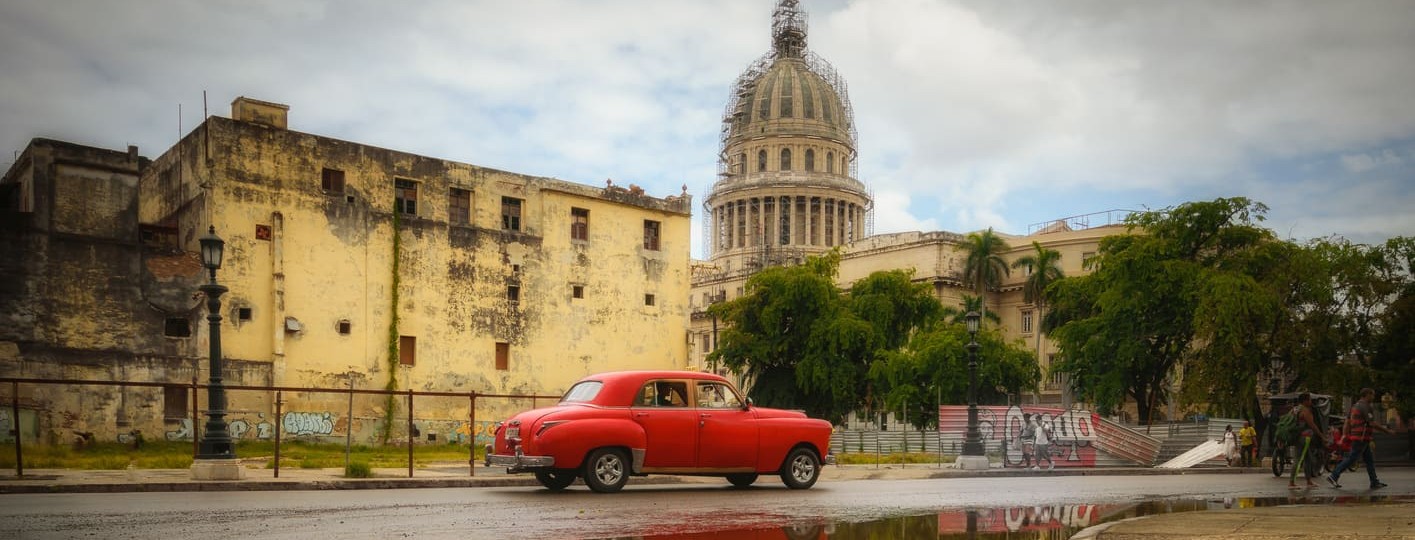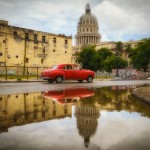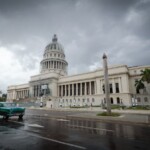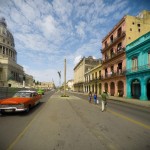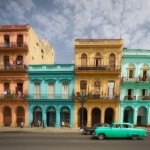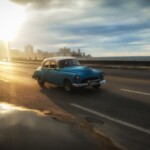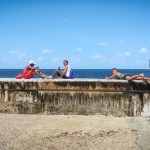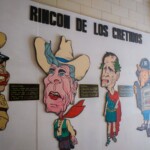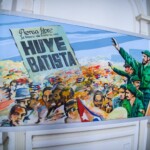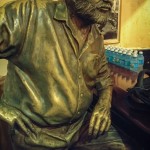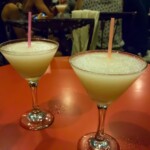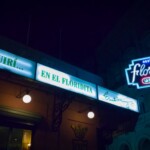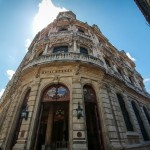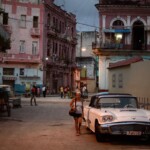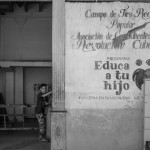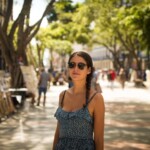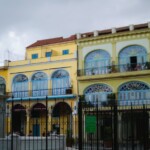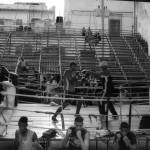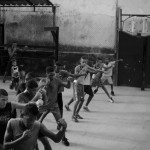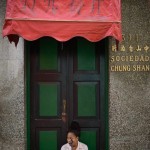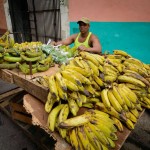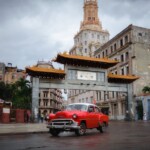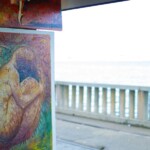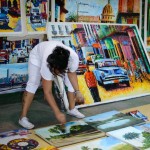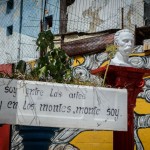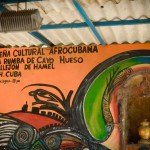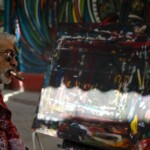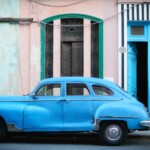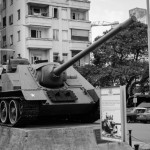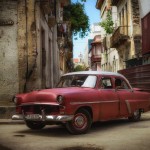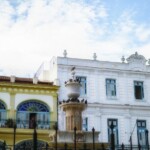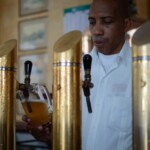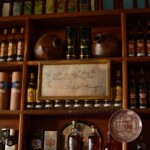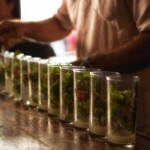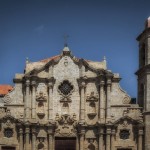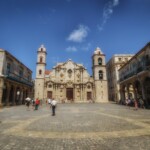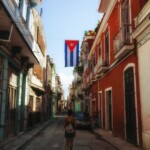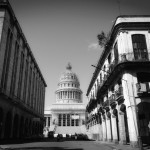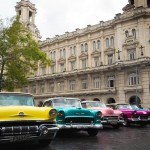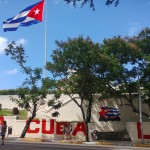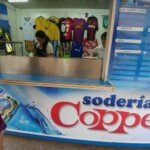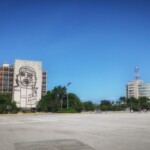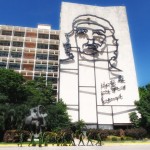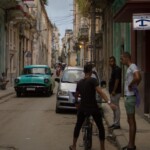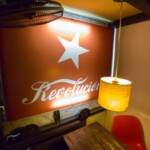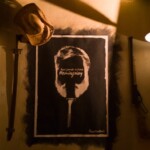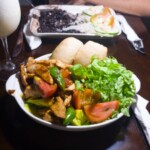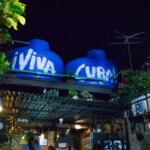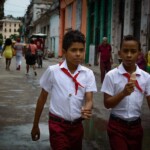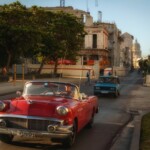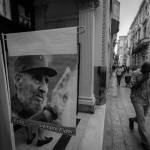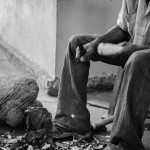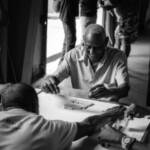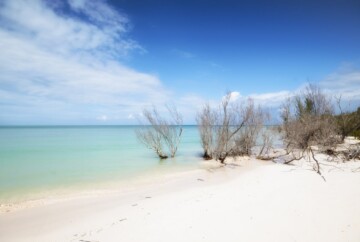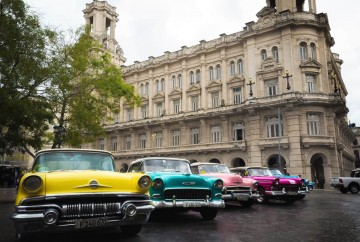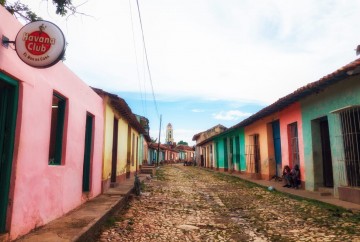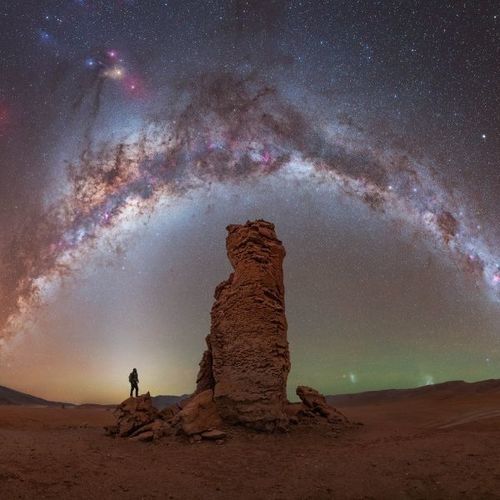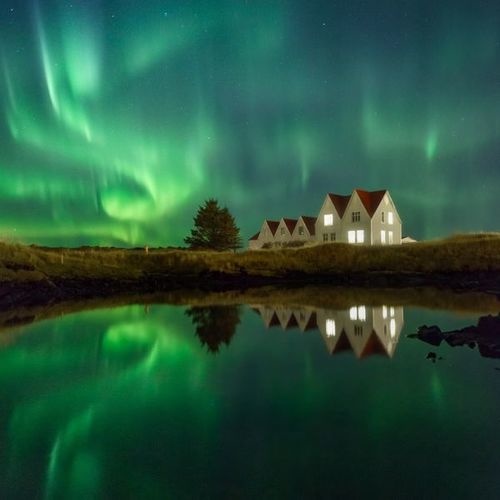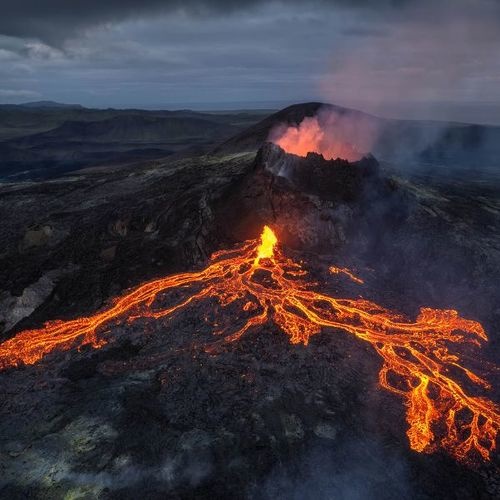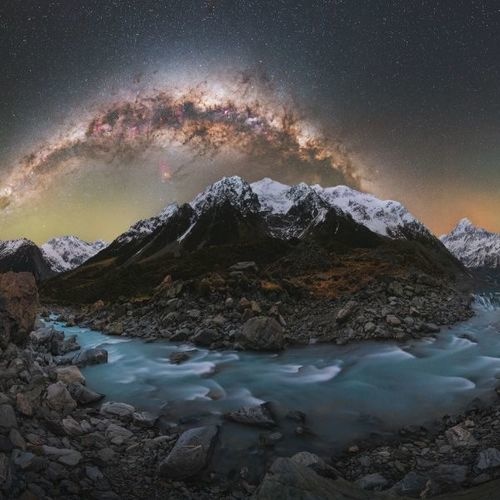Before starting with this complete guide for top things to do in Havana let’s put this city into context.
Permanent puddles that do not disappear. Street vendors twenty-four hours. Black smoke given off by Cadillacs from the 1950s and neoclassical facades falling apart. A dozen people peered at the balconies watching the time pass, and another dozen around the sidewalks. Groups of children playing catch and marbles. Discussions about any trivial topic in every corner. The smell of the salt broken by the Malecón seawall… Few cities can come to like and exasperate so much at the same time, like this museum trapped in the time called HAVANA.
And this city cannot leave you feeling indifferent. Everything is either light or darkness, greatness or decay, and black or white. What is undeniable, is that within those lights and shadows, countless treasures are found. Some are obvious while others hidden, which we will try to unveil with this Havana Travel Guide.
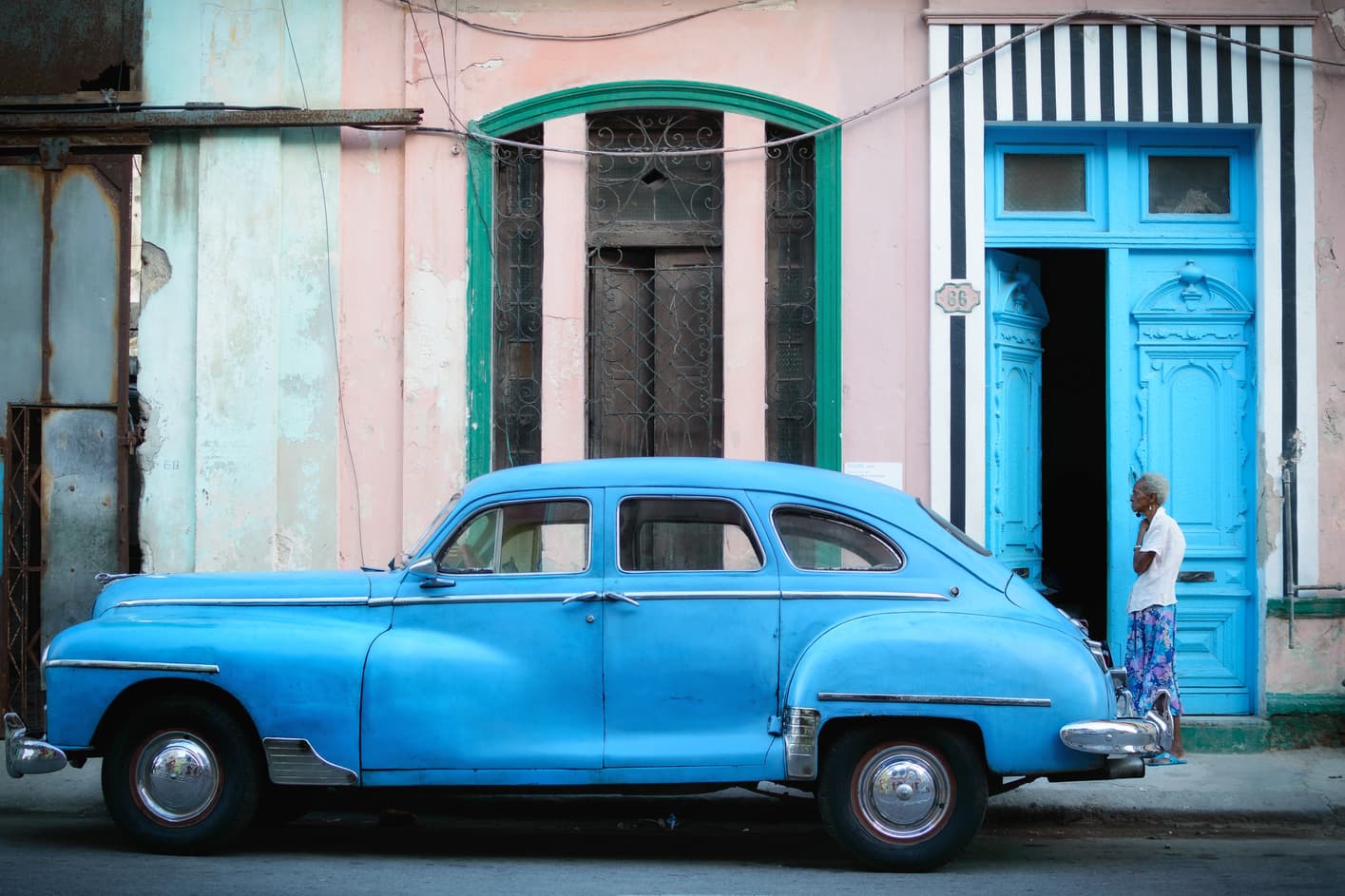
A museum stuck in time called Havana
GUIDE for top THINGS TO DO IN HAVANA
If you visit Cuba, it is very likely that you will fly to Havana. The capital of the country is a chaotic place that you will love and hate in equal parts. With this complete guide, we will make you enjoy this city.
You can navigate through the following sections of the guide:
- Touring Havana – Complete guides of the 3 main districts, with all the things you have to do and all the attractions in Havana:
→ Old Havana: The heart of Havana. Here you will find the main attractions, buildings, plazas and historical places of the city. Losing oneself in its streets is guaranteed in these lively and unique scenes.
→ Centro Habana: The neighborhood of the people, where Cubans make their daily lives apart from the tourist hustle of Old Havana. This is the perfect place to mingle with locals and soak in their way of life.
→ Vedado: The newest and most remote neighborhood. The anarchic streets give way to the constructions in a grid, with great hotels tracing back to the American mafia of the 50s.
- Where to stay in Havana.
- Where to eat in Havana.
- Transportation in Havana.
- General tips to enjoy the city.
TRAVELING HAVANA
OLD HAVANA
In all cities where there was a glorious time, it usually began in an area or neighborhood. In the case of Havana, this neighborhood is known as Old Havana.
The streets are narrow, and between the buildings we encountered some of the most ancient ones of the city. In spite of the flaking facades, we can see authentic baroque style jewels and Art Decó. Strolling by the Old Havana is like going back to the past. Imagine the city in a period in which all was grandeur, a rough diamond growing at a rate much greater than it could afford.
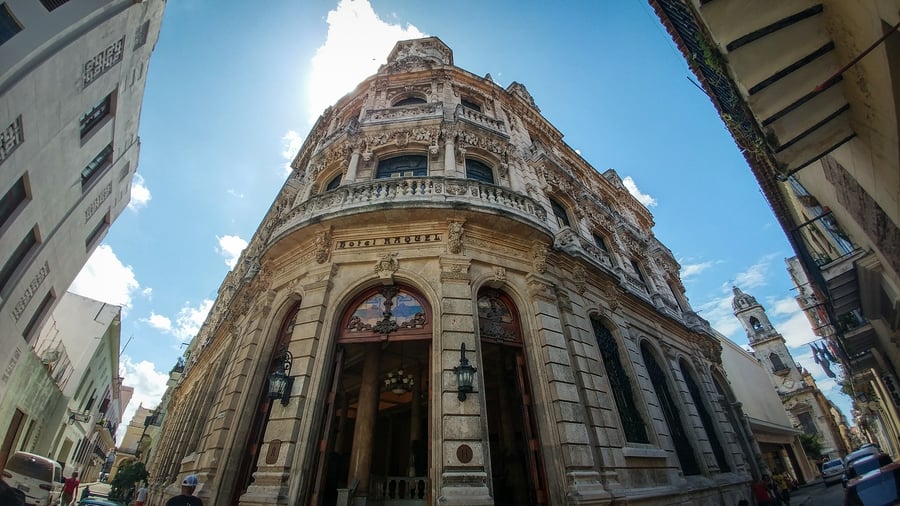
Facade of Hotel Raquel with an Art Nouveau style
Nevertheless, this open-air museum comes with a cost that is not indicated in the entrance: the exploitation of tourists is extended to every last corner. Restaurants, paladares and accommodations are immensely more expensive than those in the rest of the city. The crowds can overwhelm you, and you might get a sense of “dollar with legs” more here than in any other area of the island.
In spite of everything, Old Havana ended up trapping us like a magnet. We visited this area frequently during the 4 days we were in the city.
Cathedral Square
Unlike many cities, the Cathedral Square is the newest plaza in Old Havana. Pure baroque style, we can find the Cathedral of San Cristobal of Havana, with its famous asymmetric towers inside.
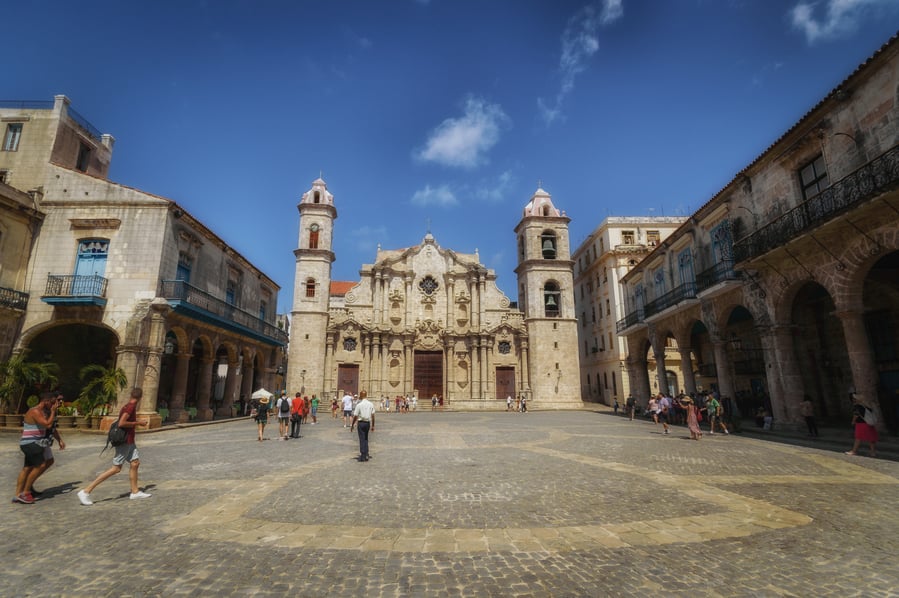
Havana Cathedral Square
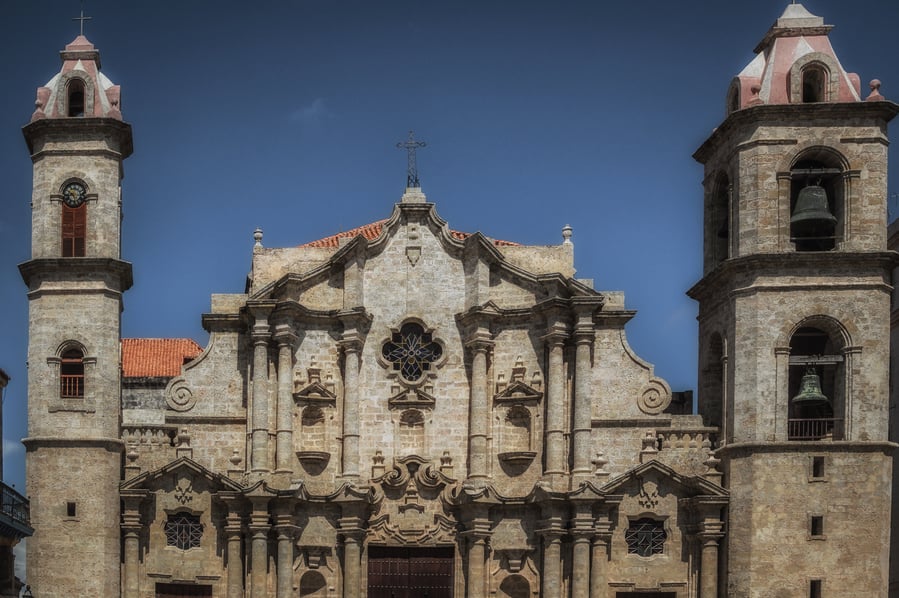
Havana Cathedral
In the plaza itself we will not see any other points of interest other than the Colonial Museum.
Adjacent to the plaza we find the famous Callejón del Chorro with the delicious paladar (restaurant) of Doña Eutimia and Calle Empedrado with the famous Bodeguita del Medio.
BODEGUITA DEL MEDIO
Despite being a very touristy place, being our first time in Havana, we did not want to miss the Bodeguita del Medio. Even when traveling as a backpacker, a visit there at least once is something you have to do in Havana.
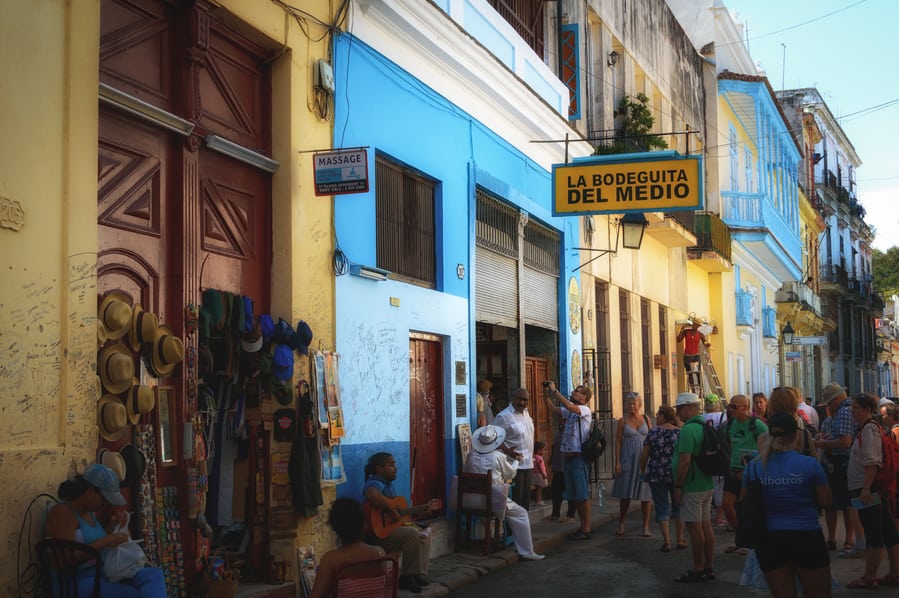
La Bodeguita del Medio
Though known for its mojitos and famous visitors like Hemingway and many others, the first impression can be disappointing. As we foresaw, the place was tiny and expressly touristy.
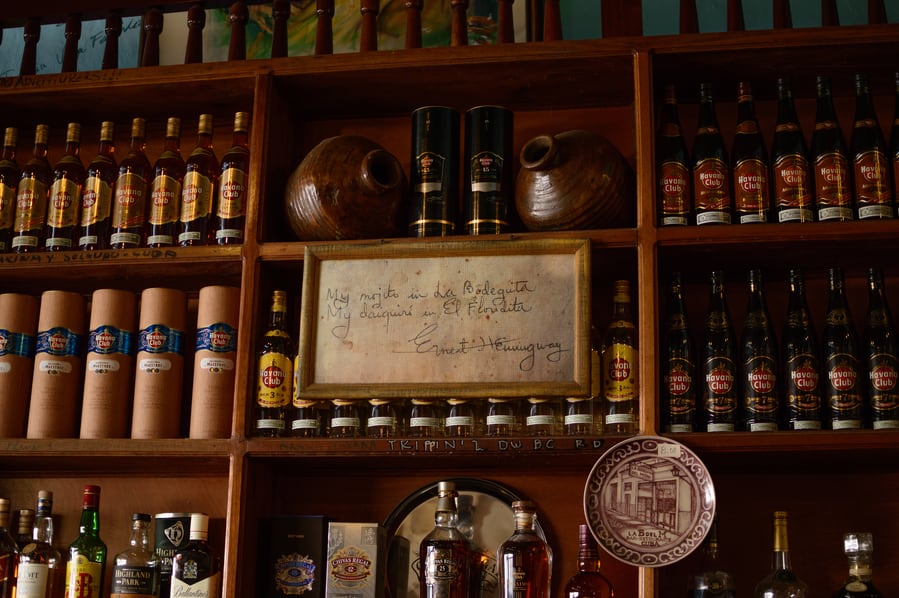
My Mojito in La Bodeguita. My Daquiri in El Floridita – Ernest Hemingway
To avoid crowding, we decided to visit the place at 11 in the morning to have our first mojitos on the island. The mojito (5 CUC) did not feel anything out of this world. However, we have to admit that the atmosphere of the bodega was unbeatable. The waiter prepared all the mojitos in line as if he’s dancing salsa, coupled with the live music, made us not regret the visit. When the orchestra asked for a song request, we asked for Chan Chan. In that moment, we felt that we were in Cuba for real.
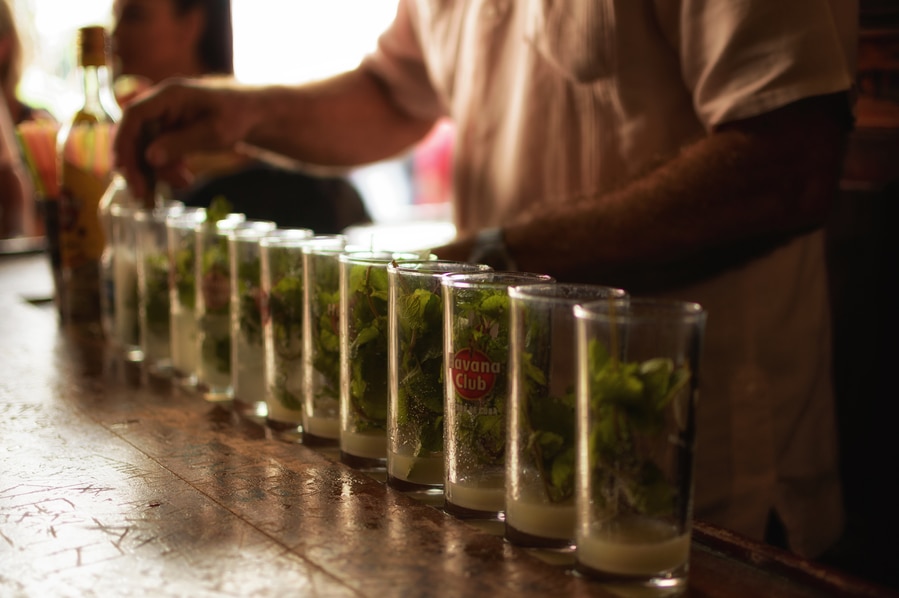
Preparation of mojitos in La Bodeguita del Medio
PLAZA DE ARMAS
Just next to the Cathedral Square we found the oldest plaza in the city; Plaza de Armas. The highlight of this plaza is the large book market, along with some stalls of old second-hand relics.
You will see the same books in all the stalls. This is because the available books are those which the government has to officially approve after the revolution took place in 1959. In spite of being eminently propagandistic, there are several jewels like the drawings card albums of the Cuban revolution and the photography books of Korda. We did not buy any books, but we agreed with a merchant to exchange them for medicines.
At one end of the plaza is the Castillo de la Real Fuerza, one of the oldest fortresses in America, where there is a sailing museum.
PLAZA VIEJA
Another one of the old plazas of Havana, originally designed for military exercises. There we can see one of the most striking architectural areas of Havana, with restored and colorful baroque, neoclassical and Art Nouveau buildings.
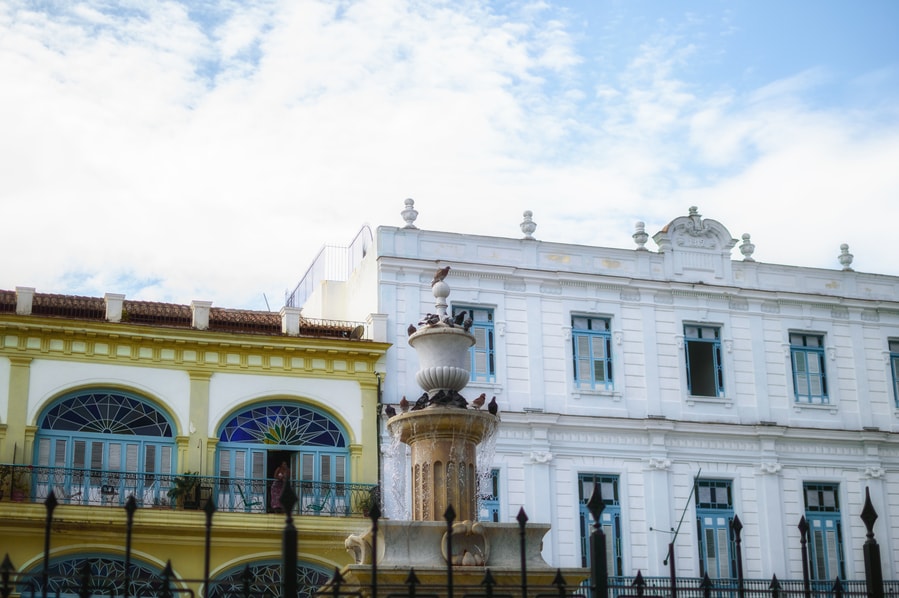
Plaza Vieja
Within the plaza, there are also several museums such as the Photo Library of Cuba and the curious quirky playing-card museum.
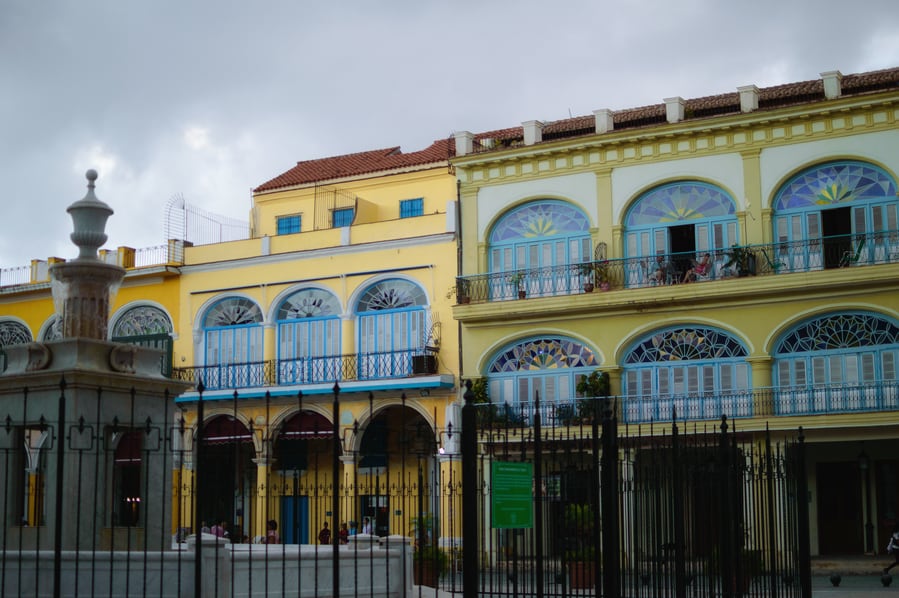
Art Nouveau buildings in Plaza Vieja
In addition, on one corner of the plaza is La Factoría, a craft beer factory with a large terrace and live music where you can refresh yourself from the heat of Havana.
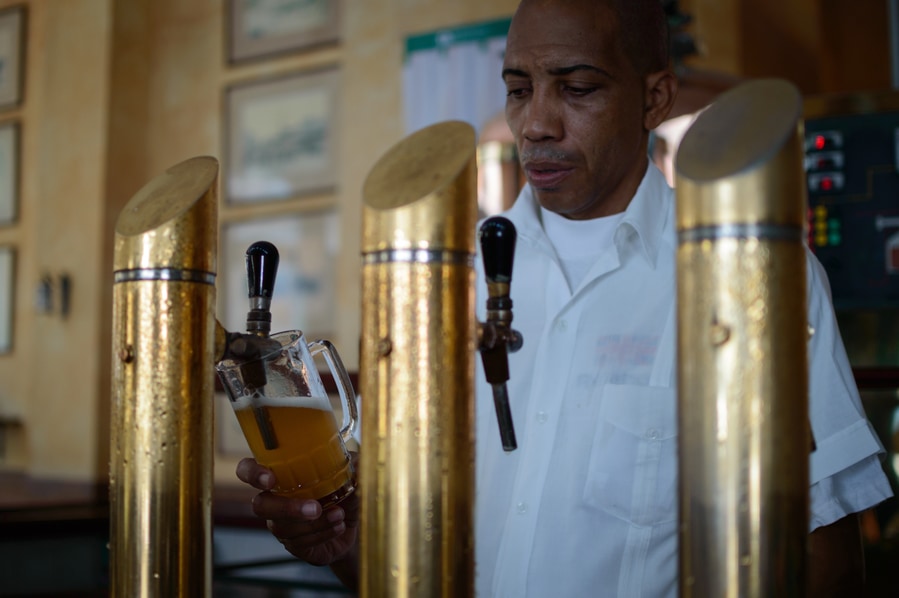
La Factoría Brewery
PLAZA DE SAN FRANCISCO DE ASÍS
In the area closest to the coast we find this plaza. There you can find la Fuente de los Leones and the church and monastery of San Francisco de Asís. Inside the plaza is also the Rum Museum and the house museum of Alexander Humboldt, a well known German scientist on the island.
El FLORIDITA
El Floridita is the cradle of the Daiquiri and, like La Bodeguita del Medio, is known for keeping the great Hemingway well hydrated.
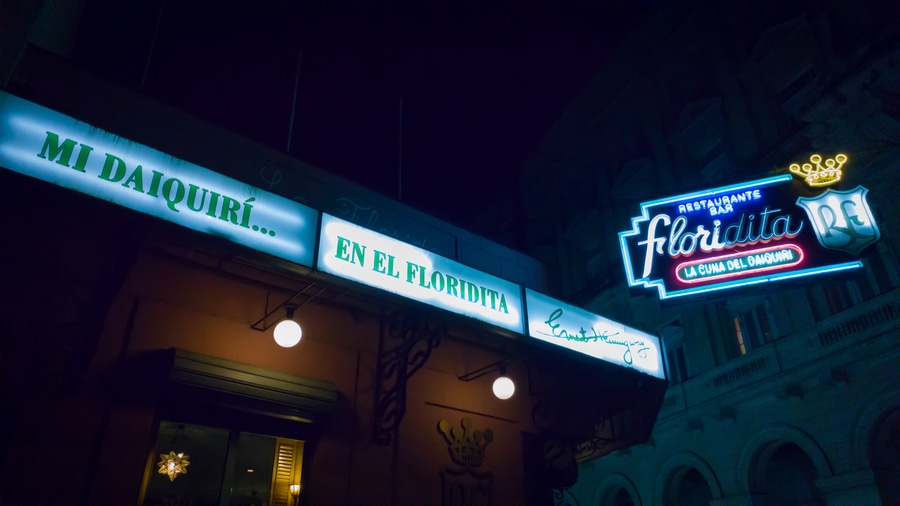
El Floridita
The Daiquiris are not exactly cheap (6 CUC), and neither did we find them to be anything out of this world. Nonetheless, it is one of those places we wanted to see at least once.
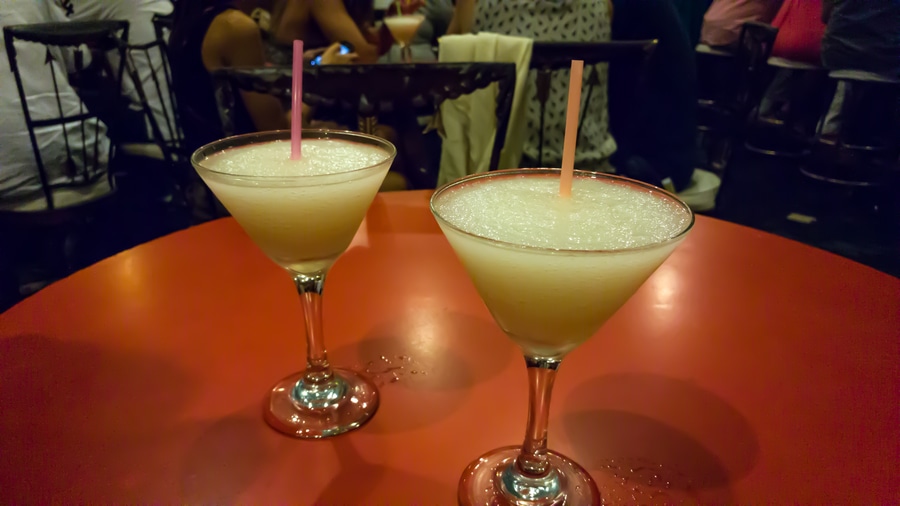
Daiquiris in El Floridita
El Floridita is large with many tables to sit, and has a 1950s style vibe. It has a small stage where there is always live music and a figure of the man who made it famous.
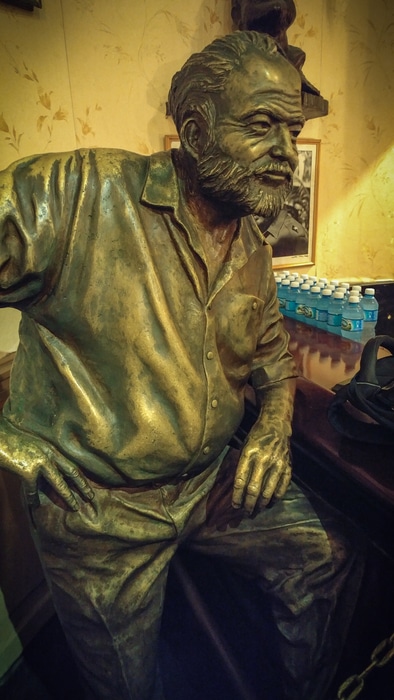
Statue of Ernest Hemingway in El Floridita
RAFAEL TREJO’s BOXING GYM
Another one of the places we visited was Rafael Trejo’s Boxing Gym. Boxing is one of the national sports on the island, watching live training is something you have to do in Havana.
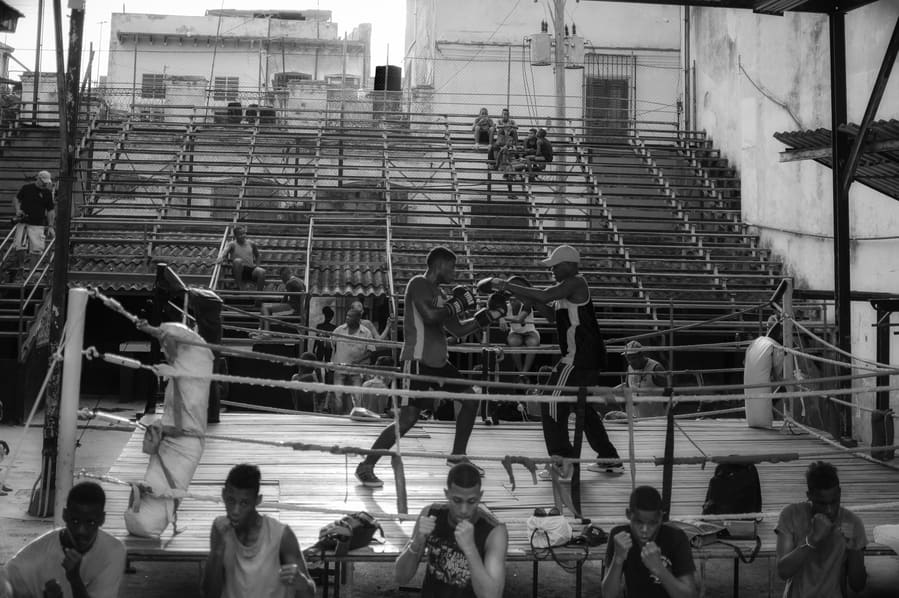
Rafael Trejo Cuba Boxing Gym
The gym is a historic place where great Olympic champions were trained. The coaches in turn take advantage of the situation by trying to charge to see the children training.

Boxing training in Rafael Trejo gym
Almacenes SAN JOSÉ ARTISANS
The other point that we found at the south of the old Havana were the Almacenes de San José Artisans. Although it is advertised as an artisan product market, we found that most of the stalls had the same souvenir items, so we do not think that this is a must stop.
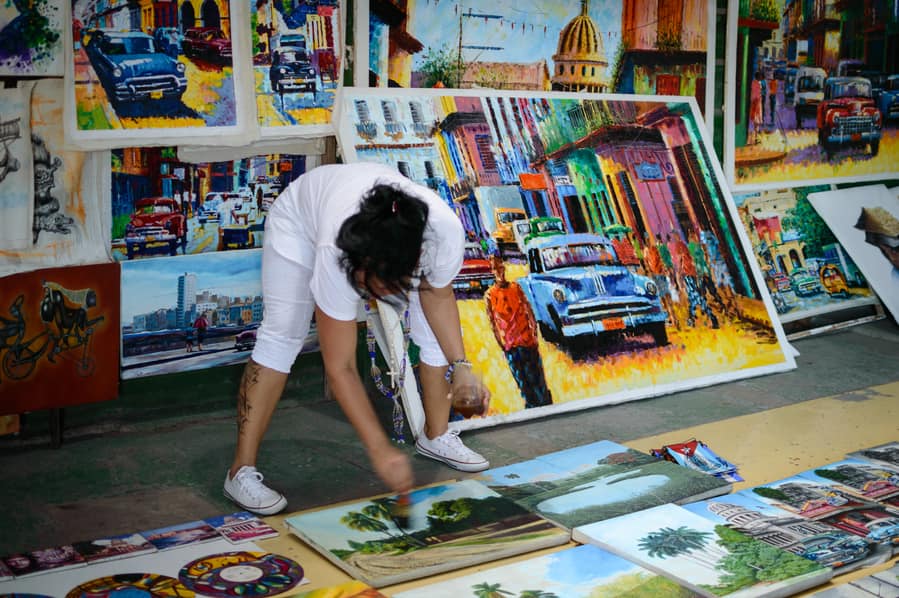
Almacenes de San José Artisans
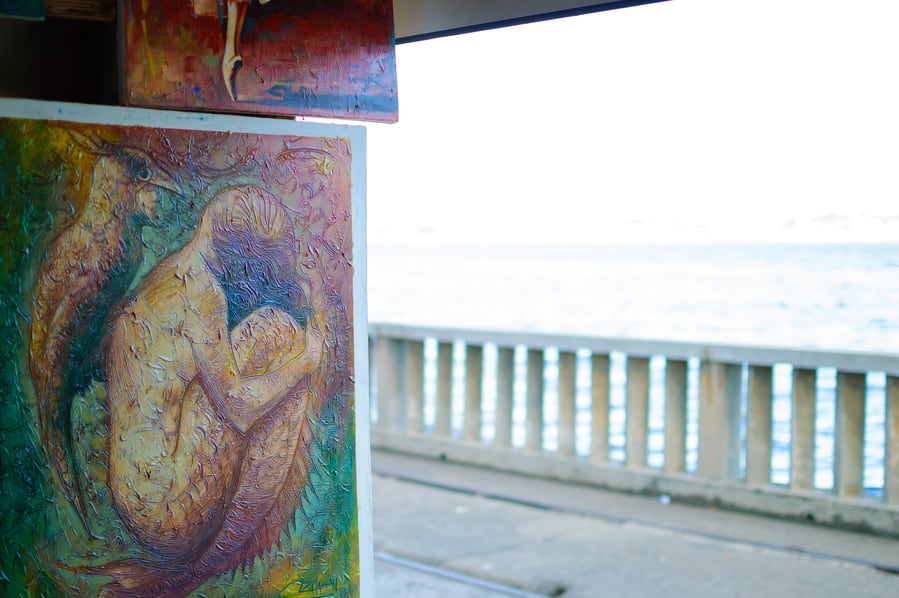
See view from the Almacenes San José Artisans
OLD WAREHOUSE OF WOOD And TOBACCO BREWERY
Just a few steps from the Almacenes, there is a brewery installed in an old warehouse of wood and tobacco. The value for your money did not seem good. However, the interior decoration is very cool as they show a lot of instruments used in the brewery.
OTHER CORNERS OF OLD HAVANA
For us, the true wealth of Old Havana was not in its main monuments or in its plazas, but in the streets. Arranged in a grid, most are long, straight and narrow. Within them, you will find a range of establishments from the typical souvenir shops, restaurants and markets, to hairdressers, mechanical workshops and schools.
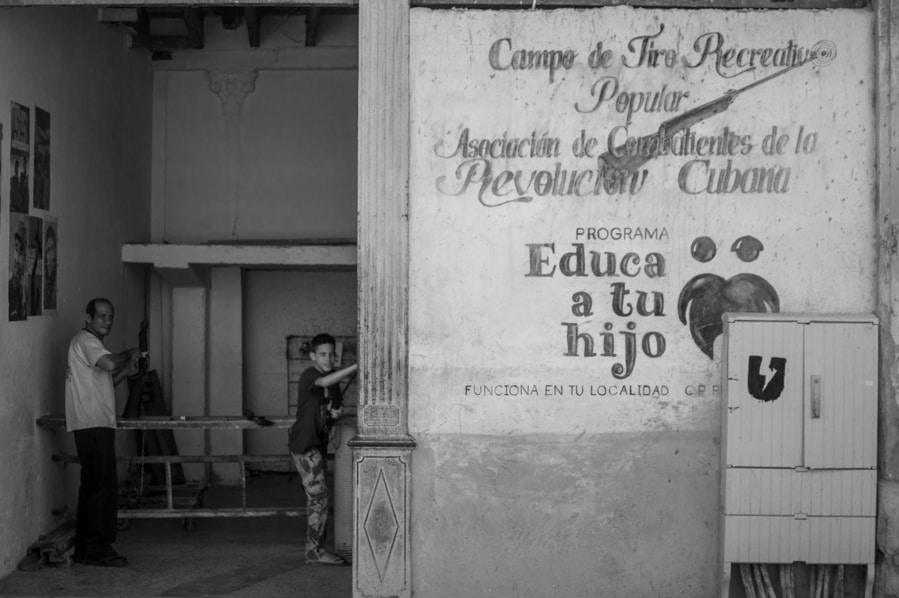
Recreational Shooting Field in Old Havana
If you go through them repeatedly, it is inevitable to learn the names: Lamparilla, O´Reilly, Amargura, Habana, Aguacate, Compostela, Muralla… they are displayed all over on both common and unusual things.
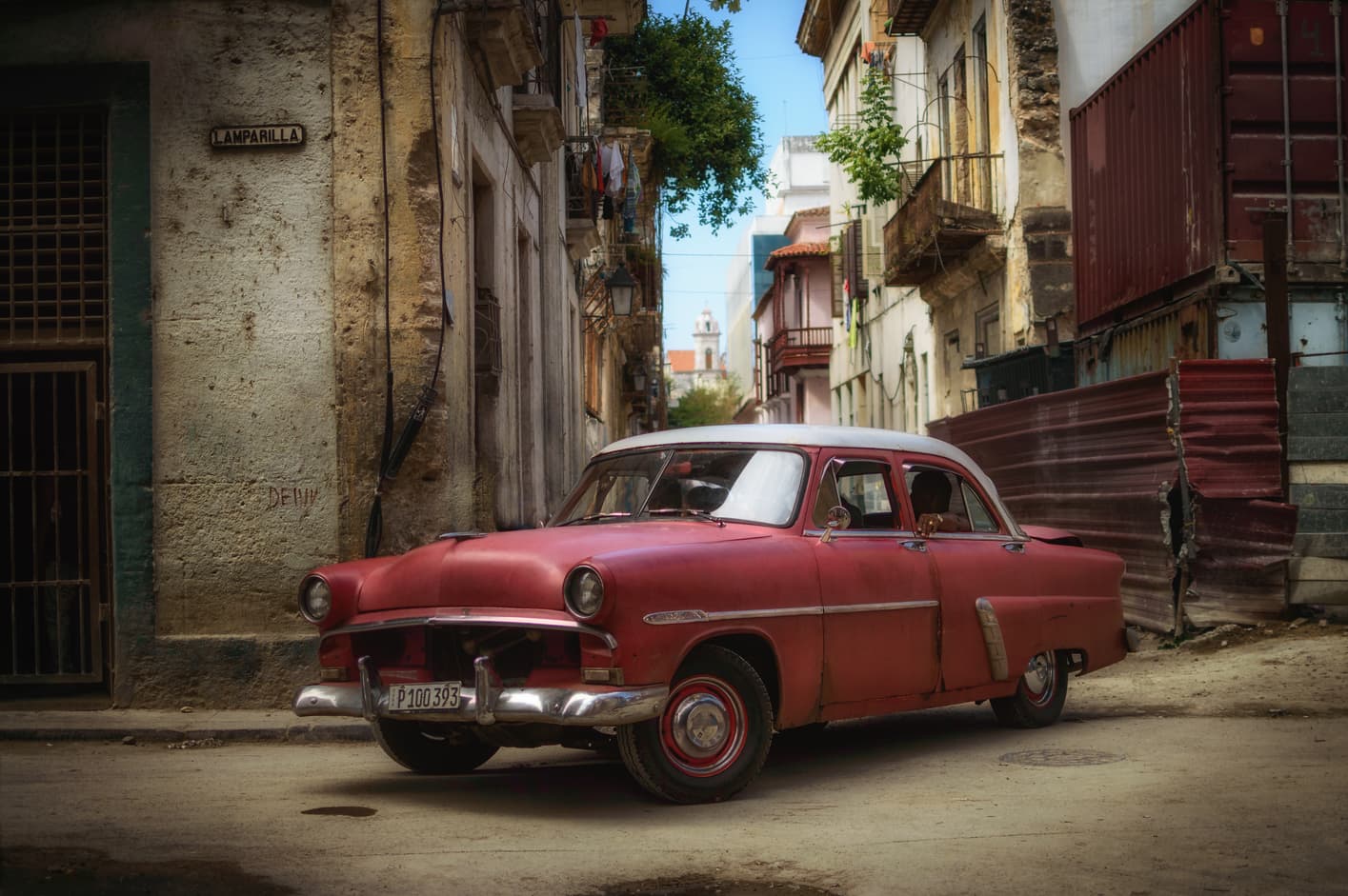
Lamparilla street in old Havana
Within them also stands the pedestrian Calle Obispo, acting as the main artery of Old Havana. On this street, we can find the main tourist shops, with a CADECA and an ETECSA internet point between them.
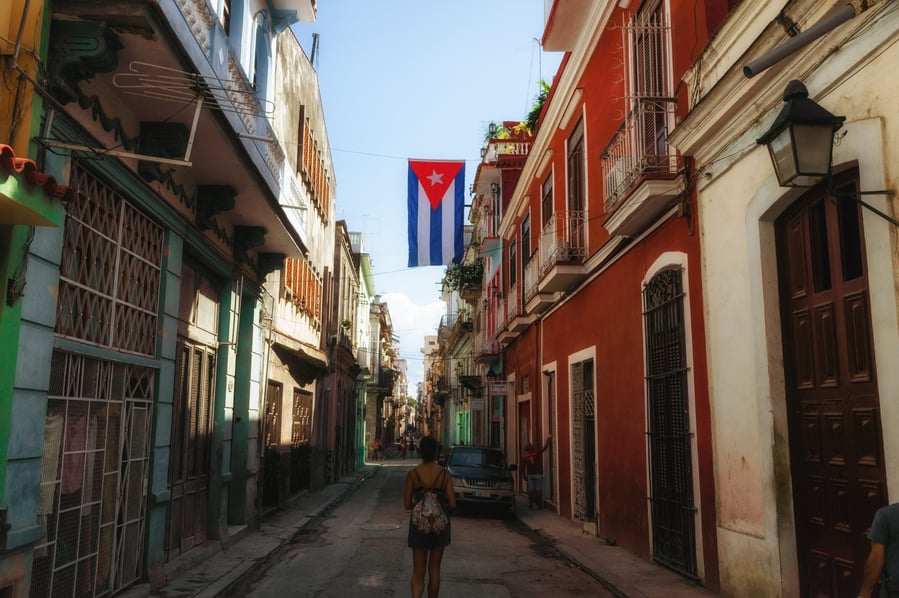
Streets of Old Havana
CENTRO HABANA
If Old Havana is the historical heart of Havana, Centro Habana would be the engine of the city.
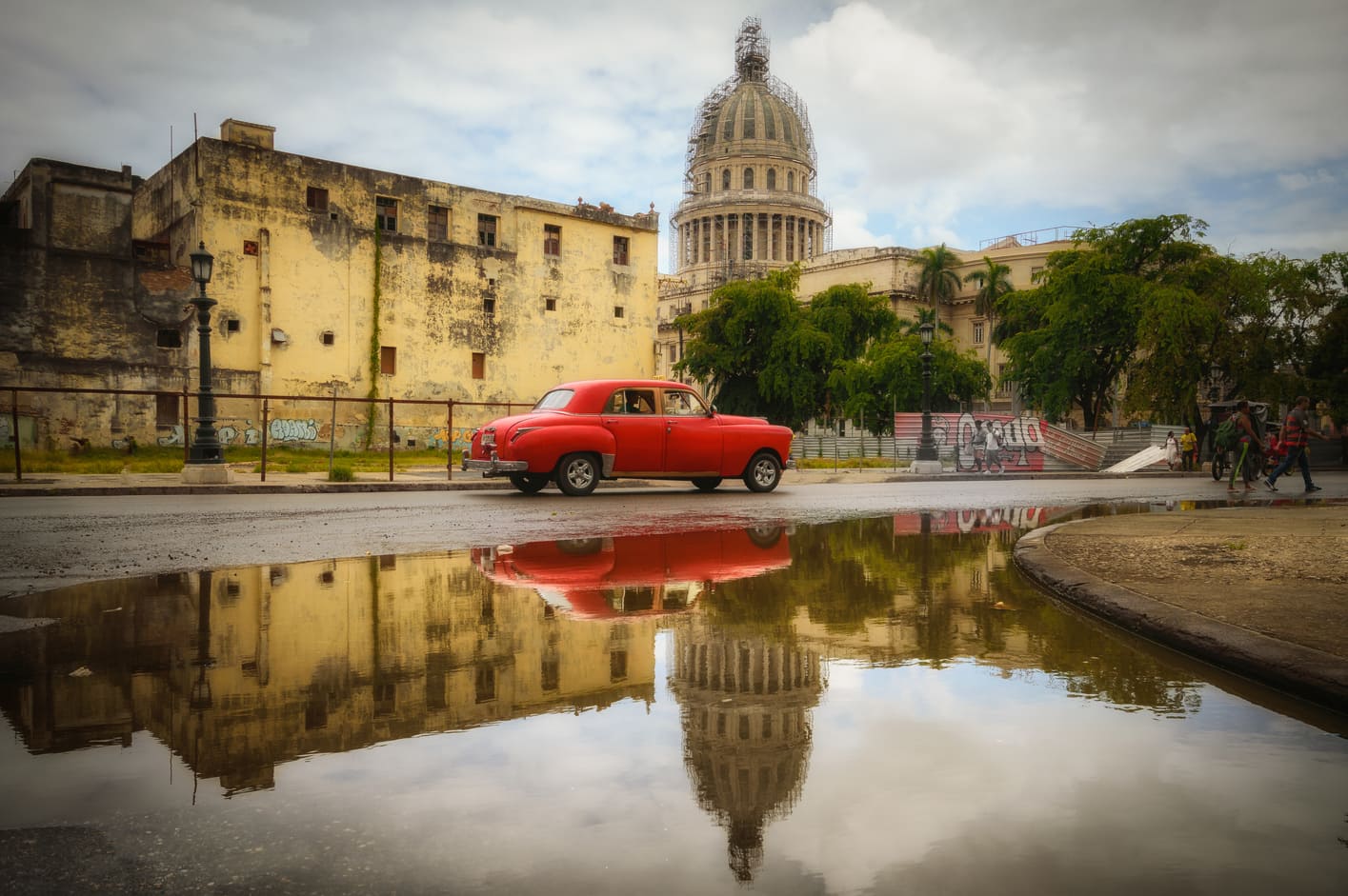
Centro Habana
In Centro Habana we will see monuments and tourist sites such as Paseo de Prado, the Capitolio or the Revolution Museum. However, we will also see zones and spaces outside the tourist world, where people are employed in their day to day life and where we can breathe a much more authentic and original Cuba.
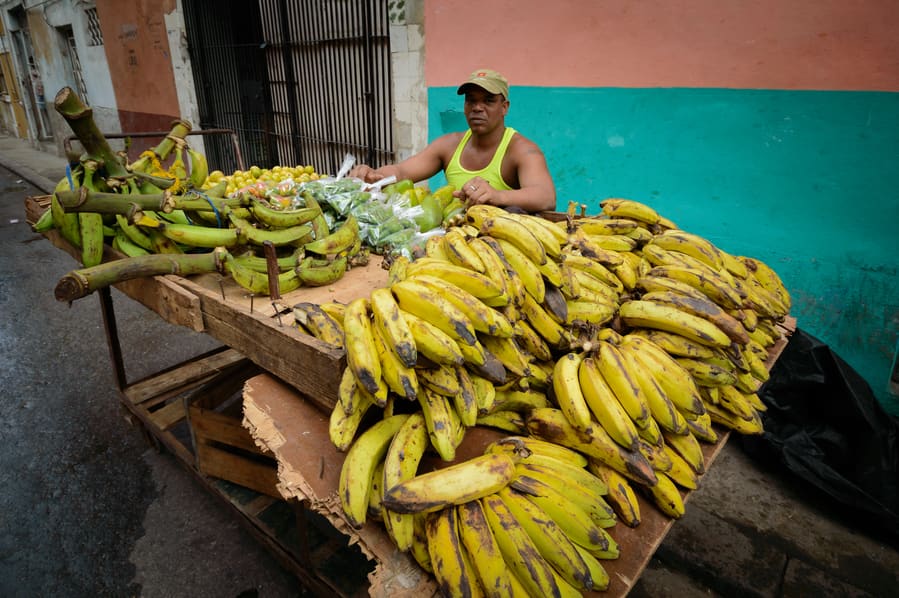
Daily scenes of Centro Havana
Centro Habana will always be a special place for us, especially Calle Industria, where the private houses we stayed were located.
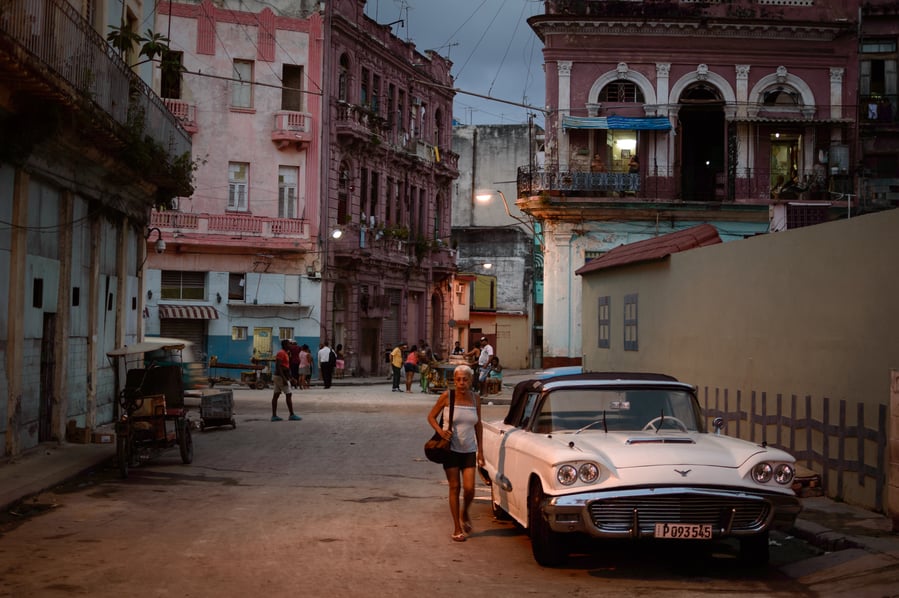
Centro Havana
REVOLUTION MUSEUM
In a building as historic as the old presidential palace, the Revolution Museum, is one of those iconic and unique places where a visit is definitely worth it.
The Revolution was the most important event in the history of Cuba, so you cannot miss any museums in its capital that addresses the issue. Without the revolution, nothing in Cuba as we know it would be what it is.
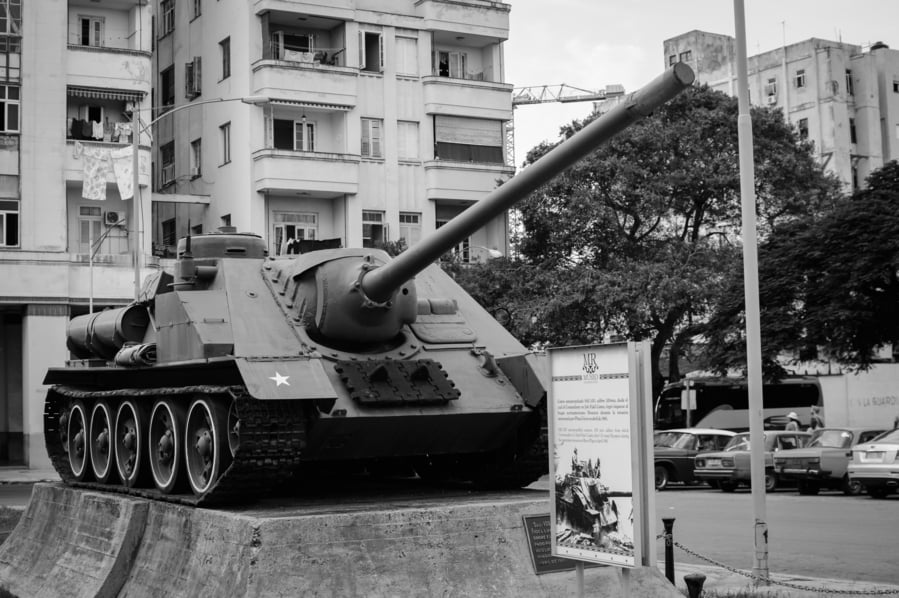
Tanks in the museum of the Revolution
In the museum you will find exhibits from rooms about the revolutionary beginnings, to several rooms that talk about battles of the revolution itself. In addition, a lot of personal objects of the main fighters are exposed.
The museum is clearly propagandistic, with special emphasis on the economic and social achievements of the communist system.
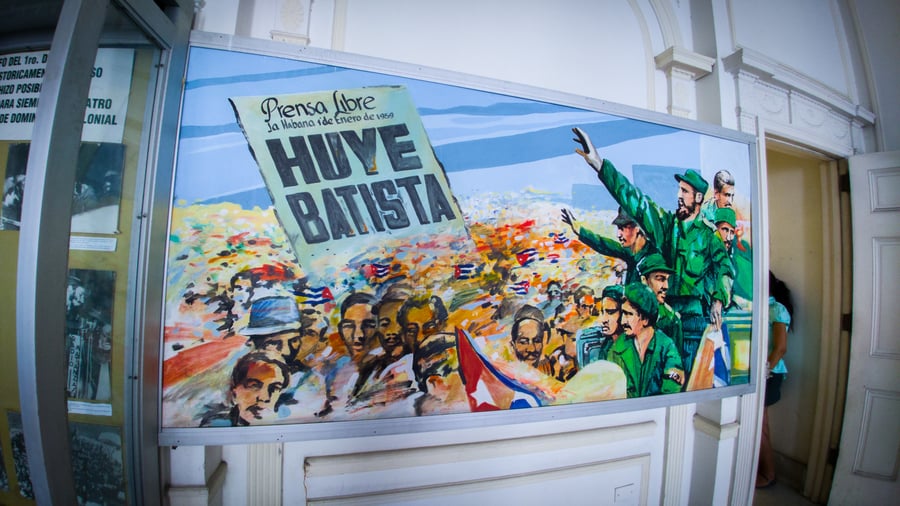
Museum of the Revolution
We found all the elements of the museum very interesting, some even funny like the so-called “Corner of the Cretins”. There are giant drawn caricatures of Bush father and son, Batista and Ronald Reagan.
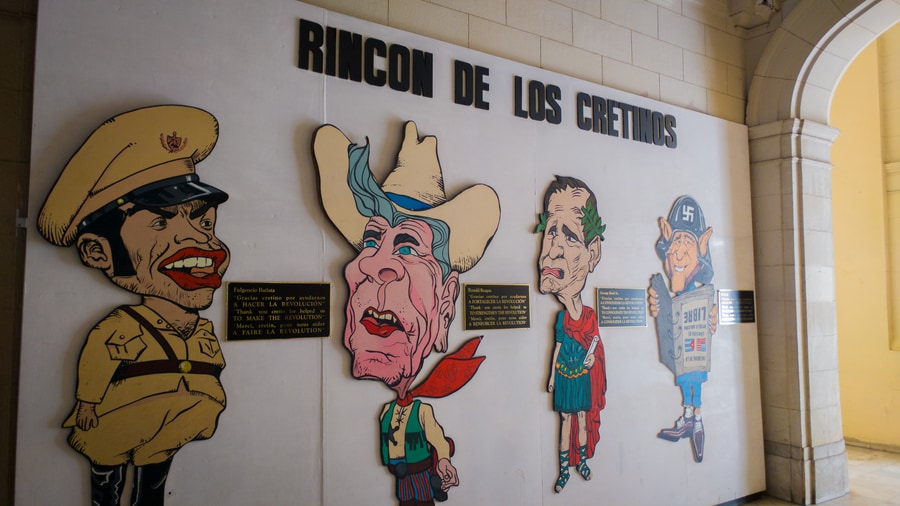
Corner of the Cretins
PASEO DE PRADO / JOSE MARTÍ
Acting as a backbone joining the coast from the Malecón to Central Park, Paseo de Jose Marti (mostly known by its prerevolution name Paseo del Prado) is the main avenue of the city.
During the day, there are several stalls of paintings, antiques, photographs, etc., while late afternoon and evening, it becomes a common and pleasant area to take a walk.
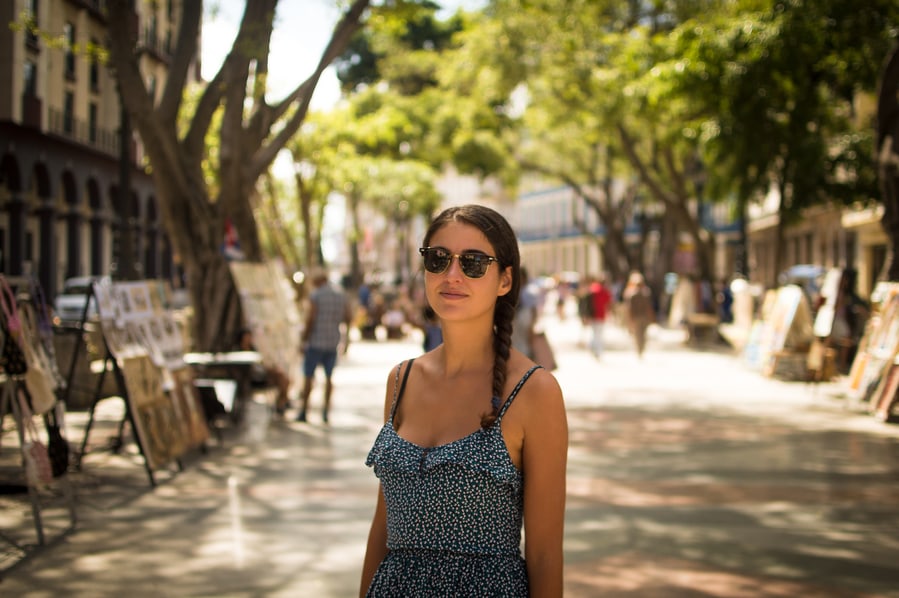
Paseo del Prado
PARQUE CENTRAL
This small park is located just in the middle of Havana, between Capitolio, Paseo de Prado, and Old Havana. It is also surrounded by other great sites such as the Gran Teatro de la Habana and the neoclassical Hotel Inglaterra.
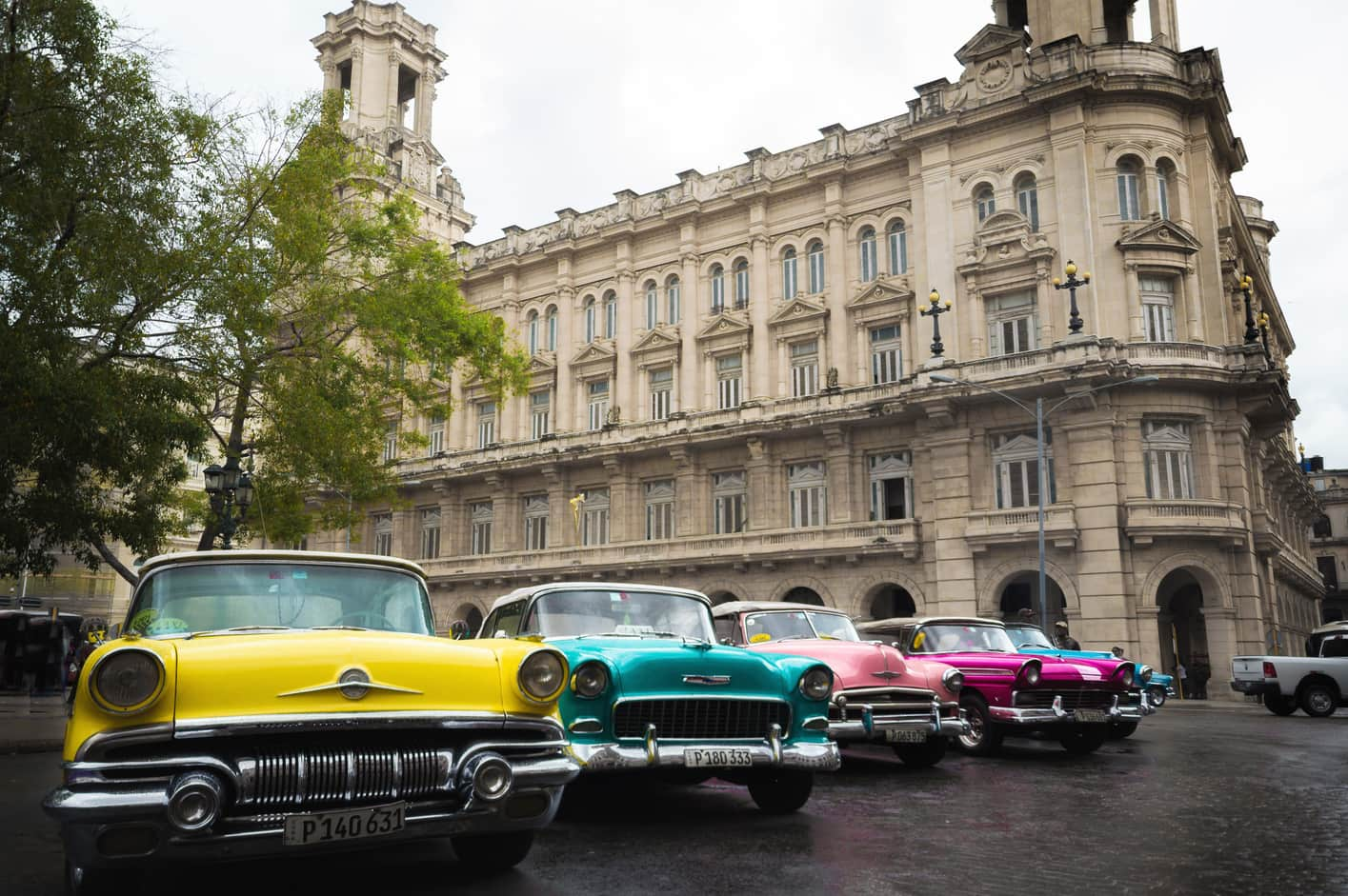
Cadillacs
CAPITOL
It is undoubtedly the most grandiose and iconic building in Havana. It was built after the First World War, taking advantage of the economic boom in Cuba thanks to the sale of sugar.
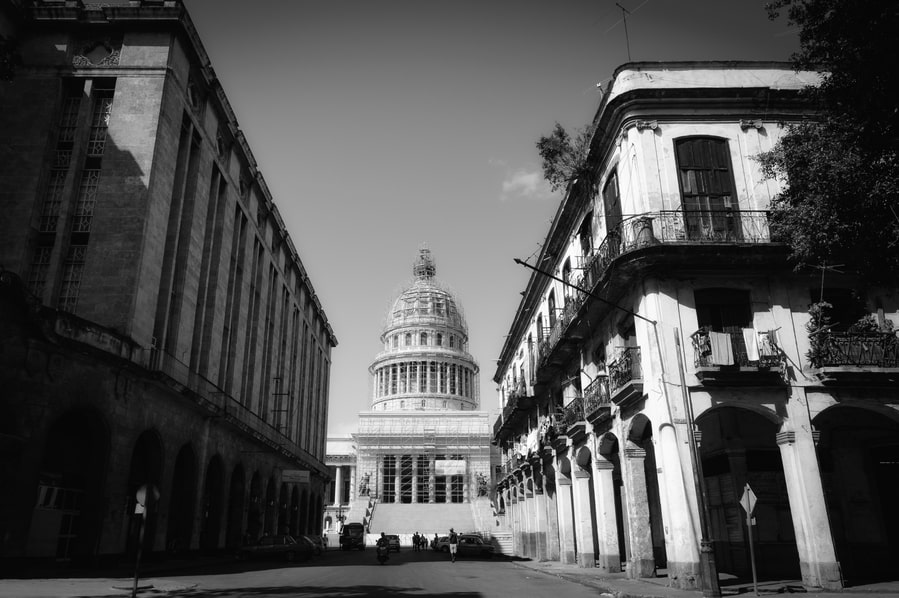
The capitol
Inevitably it reminded us of Washington, and at the beginning it was used as the seat of the Cuban Congress. After the revolution, it was recognized as the headquarters of the national library of science and technology.
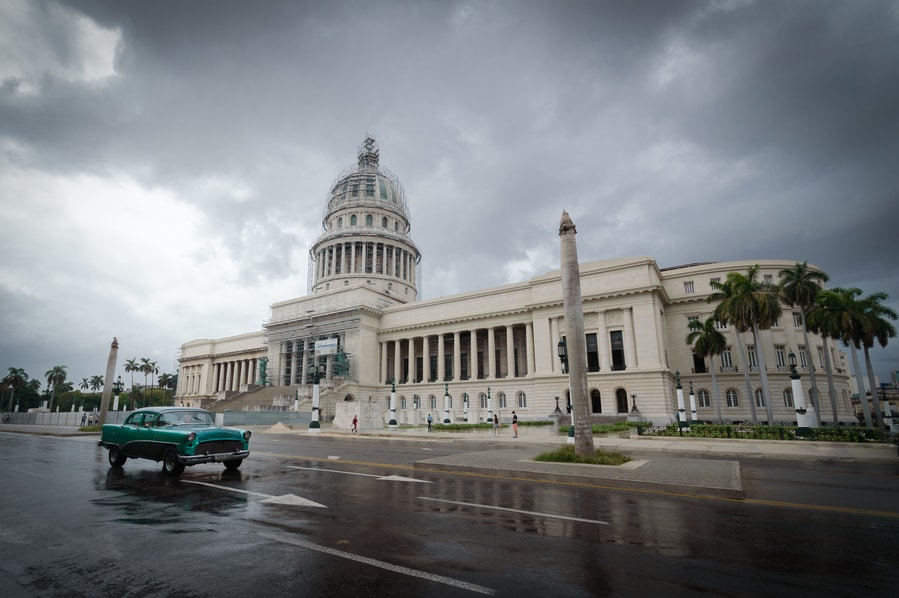
The capitol
During our visit, the dome was being refurbished. It has taken so long, it is not known when it will reopen for sure. Maybe you will have more luck and can see the fully renovated building!
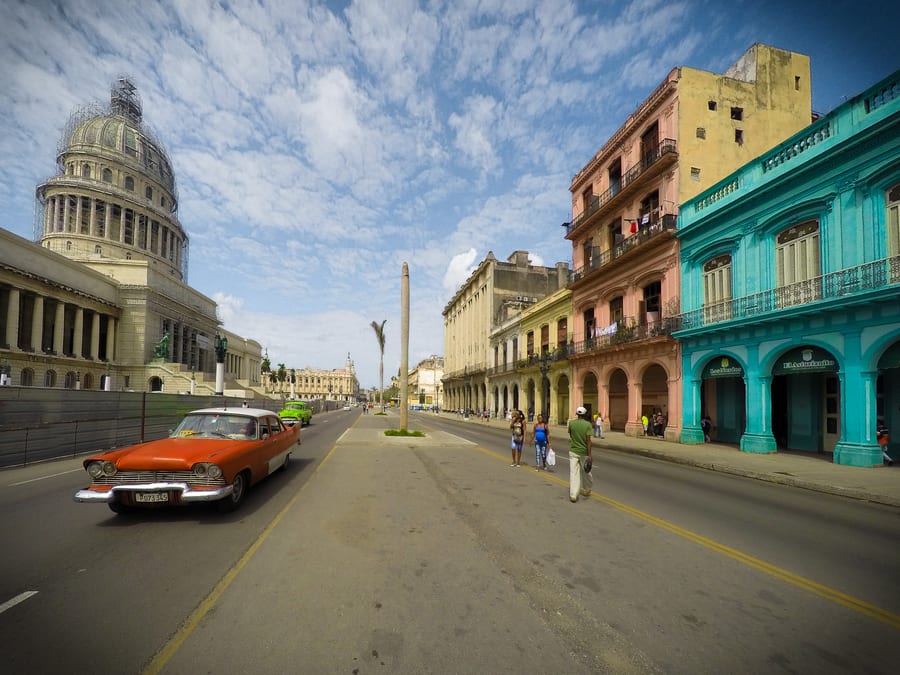
Capitol and colorful houses in front
In front of the Capitolio (Capitol) are buildings with renewed and colorful facades. This postcard is probably one of the most photographed places in Havana.
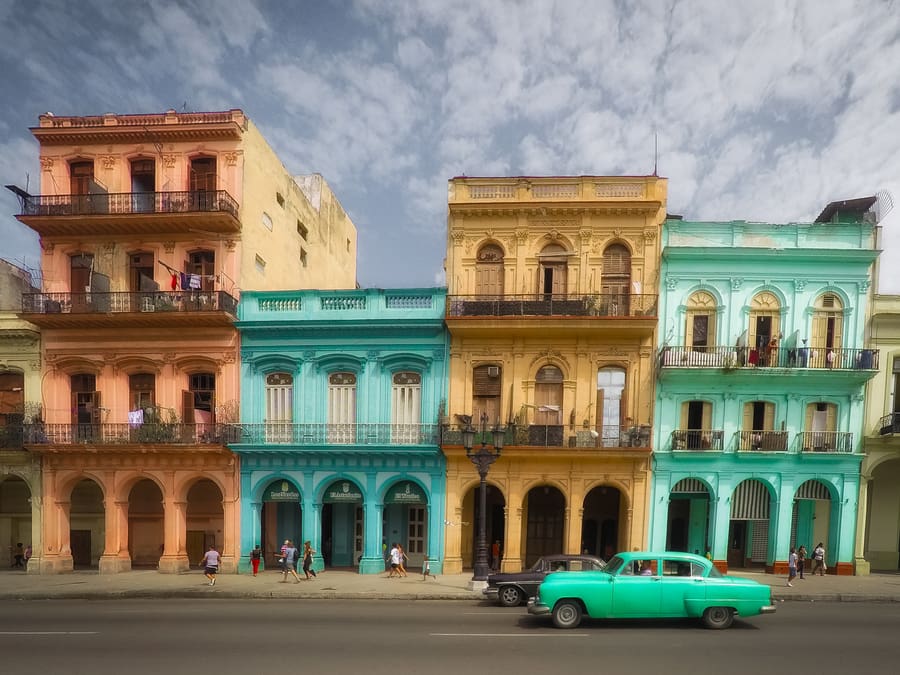
Colorful houses in front of the Capitol
Chinatown
Chinatown is another of those unique rarities of Havana, that you cannot stop exploring.
The origin traces back to the beginning of the 20th century when the active Cuban labor market and the distinct plantations took place. Because of that, a lot of Chinese people migrated to the island and thus establishing in this neighborhood. Soon, it turned into the biggest Chinatown of all of South America.
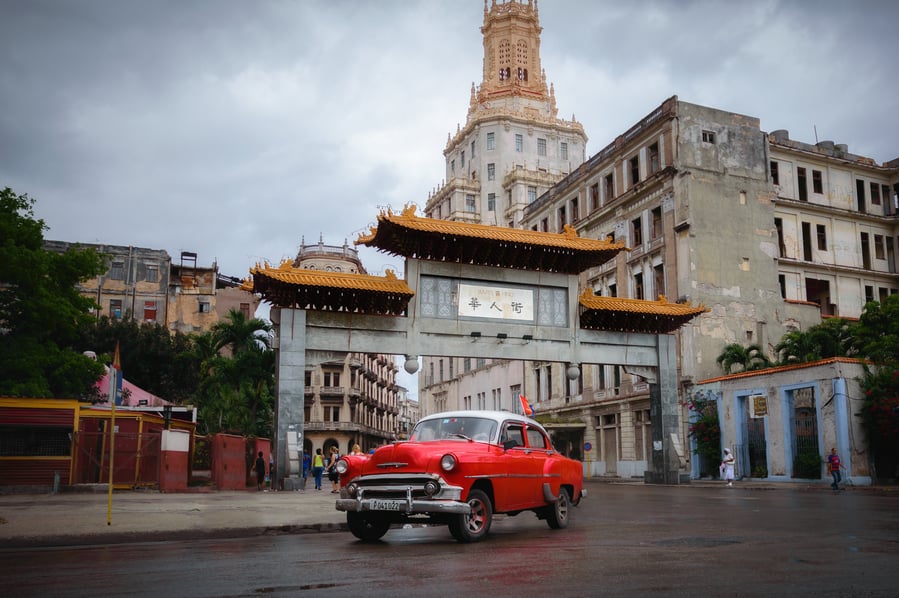
China Town
The strange thing is actually that there is not a single Chinese living there. As one can expect, they left the island because of the economic crisis and the Revolution.
A few years ago, the government made a neighborhood restoration plan, so you can see the huge Asian pagoda they built, as well as street names in Chinese and other decorative elements.
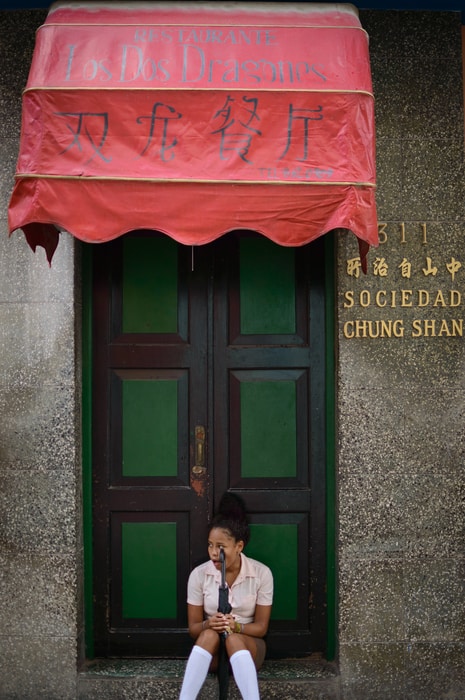
Although no Chinese live here, Asian decorations are still visible
EL MALECÓN
Though filmed in countless movies, the Malecon (promenade) may disappoint you. The first impression is that of a bare seafront, of cement without ornaments, palm trees, or even benches; just streetlights and cement for five miles.
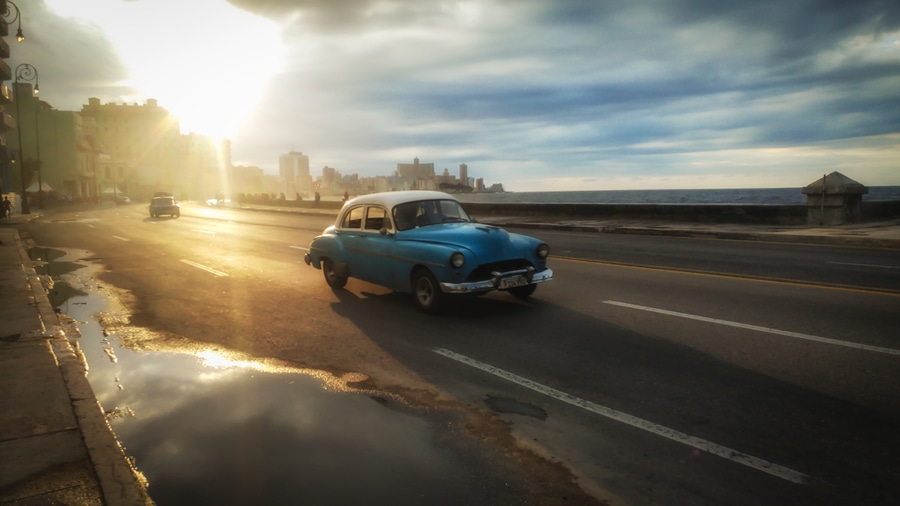
The Havana Malecon
It was built in several sections starting from the Castle of San Salvador de la Punta to the neighborhood of Vedado where it arrives at today.
This boardwalk would go unnoticed anywhere else in the world. But not in Havana, where how it has become an icon is no accident.
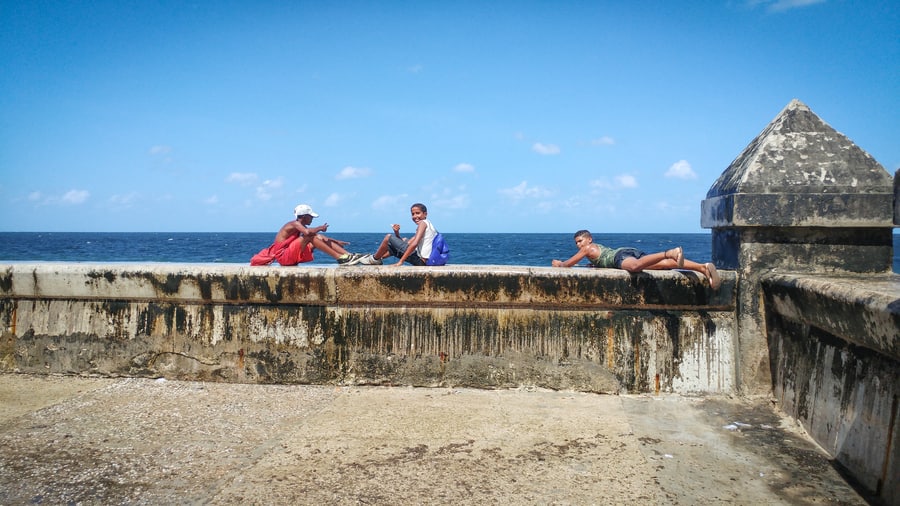
Children enjoying the waves on the Malecon
By day, it is a transit ride and a wide avenue full of cars with lots of noise and pollution. However, as soon as the sun begins to fall on the horizon of the Vedado and the Hotel Nacional, the Malecon is filled with local people, becoming a nerve center.
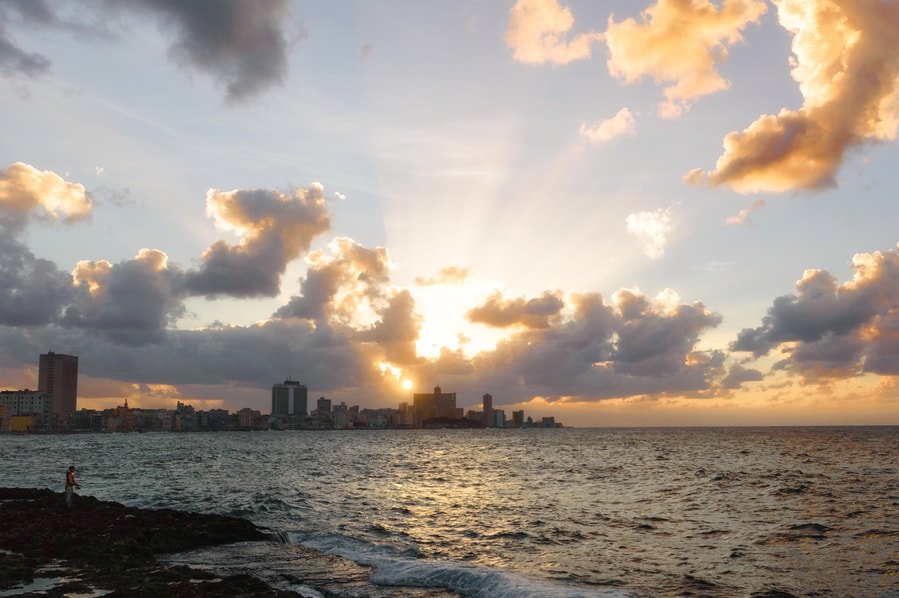
Sunset on the Malecon
One of the top things you have to do in Havana is ponder along the boardwalk at sunset.
CALLEJÓN DE HAMMEL
Away from Centro Habana, we come to another one of the most interesting spots we can find in the city: el Callejón de Hammel .
It is a small alley inspired fully by the Afro-Cuban culture.
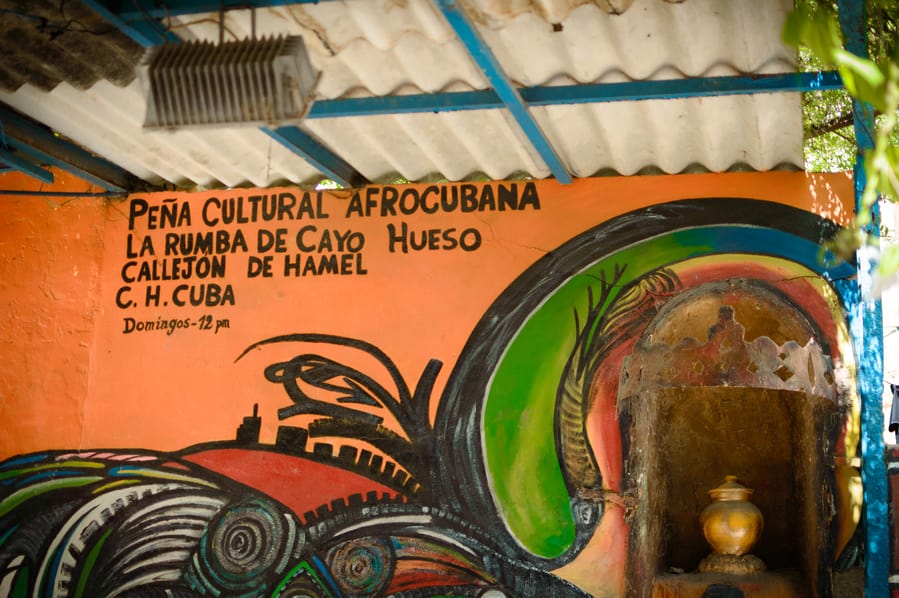
Callejón de Hamel
The project was started in the 90’s by the painter and sculptor Salvador González Escalona; an eccentric Cuban artist who has since given life and light to this alley. There, you will find murals, sculptures, phrases, poems, etc. with a complete relationship with the Afro-Cuban religion and the values of the island.
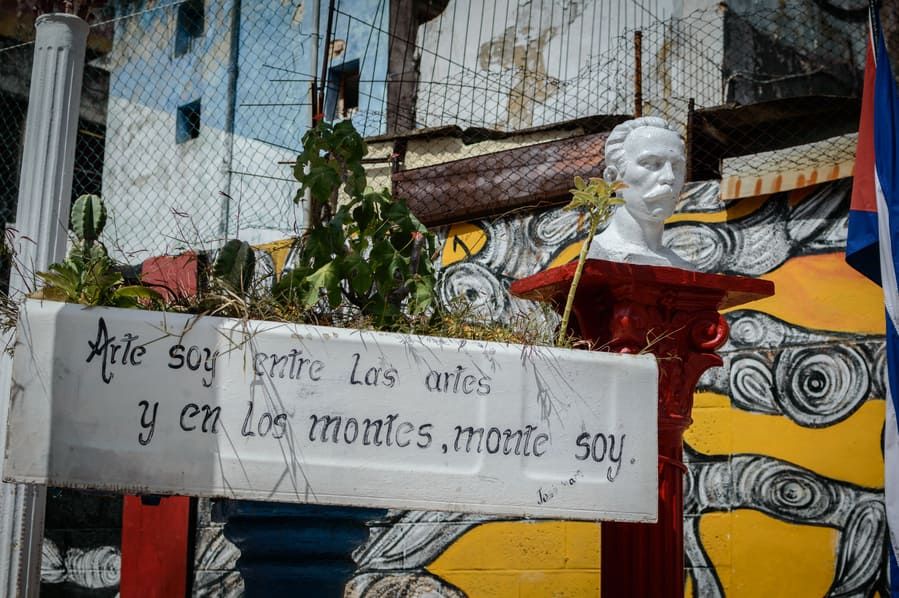
Callejón de Hamel
We can also find a bar and an underground room where there are several pictures of the painter for sale. When we went, we were able to see Salvador completely immersed in one of his works.
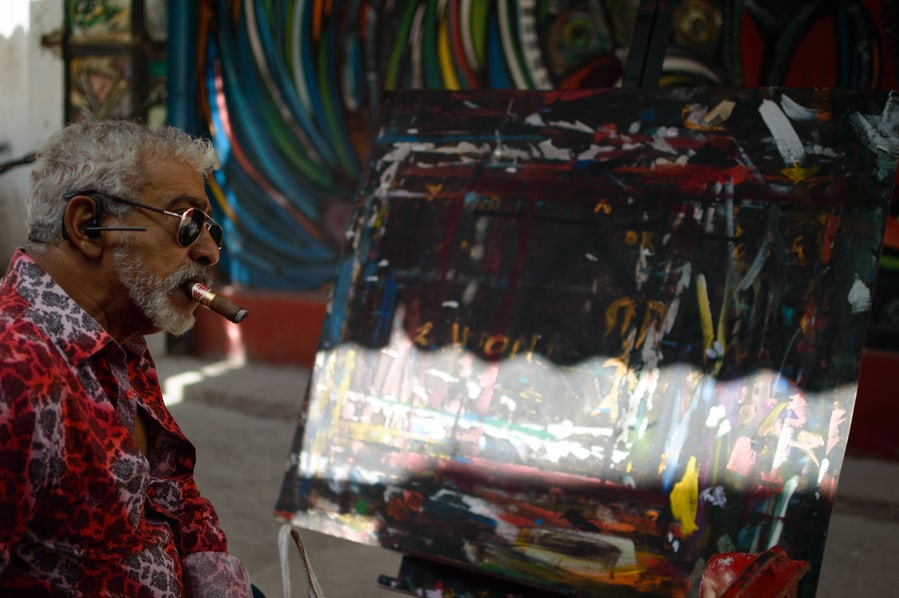
Salvador González Escalona painting
We visited it during the week; but if you can, go on Sunday, since that day live Afro-Cuban music does not stop in the alley.
VEDADO
The area of Vedado was perhaps the area that we explored less, we overlooked it since there were certain places that we wanted very much to see.
This neighborhood arose late compared to Old Havana and Centro Habana; in that era of splendor when they copied the American model of grand avenues, hotels, and Cadillacs.
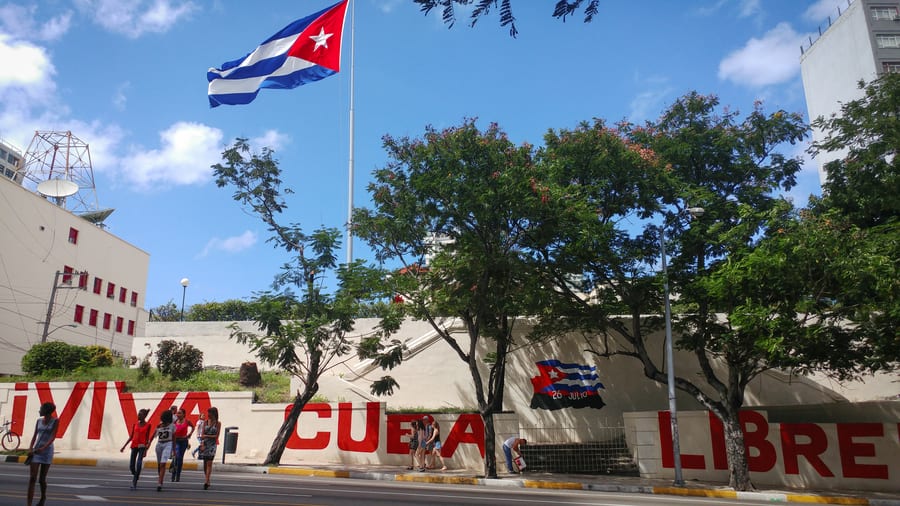
Vedado
Historically, it was recognized by all the influence that it had during the time of splendor in which it arose. The scenario in which it developed was very different from the post-revolutionary: cabarets, casinos, big hotels, American mafia managements, etc.
COPPELIA ice cream
We enter the neighborhood of Vedado after crossing the Malecón. Afterwards, we continue our route ascending by the 23rd Avenue where you will find the University of Havana and the celebrated Coppelia Ice Cream shop, famous mainly for the film “Fresa y Chocolate”. They have three flavors which change every day, and although it has a reputation for having large lines, we went at noon and they were ready to serve us.
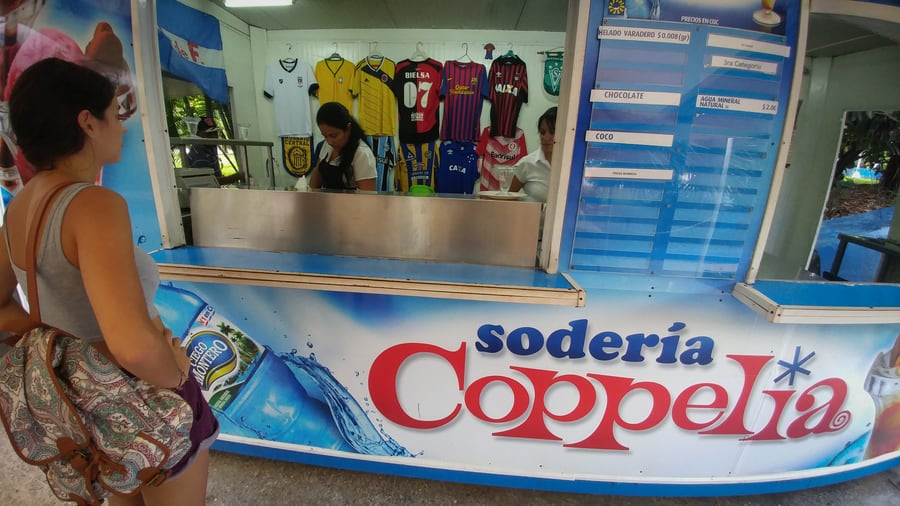
Coppelia
NECRÓPOLIS DE CRISTOBAL
After Coppelia we continue along Avenida 23 until we arrived at the Cemetery of Cristobal Colón. The entrance to the Necrópolis was 4 CUC. The most interesting thing here is the grave that is dedicated to firefighters.
Revolution PLAZA
After passing through the Necropolis, we arrive at the Revolution Plaza. With its 72000 square meters, it is one of the largest in the world. However, there is nothing there except for the statue in honor of Jose Marti and the famous building with the relief of Che, accompanied with another relief of the guerrilla Camilo Cienfuegos in a nearby building since 2009.

Revolution Plaza
However, we are obliged to put this place in its context, especially since the Revolution. Here, we can imagine thousands and thousands of people gathering to listen to the eternal speeches of Fidel Castro, or the parades that take place every May 1st here.
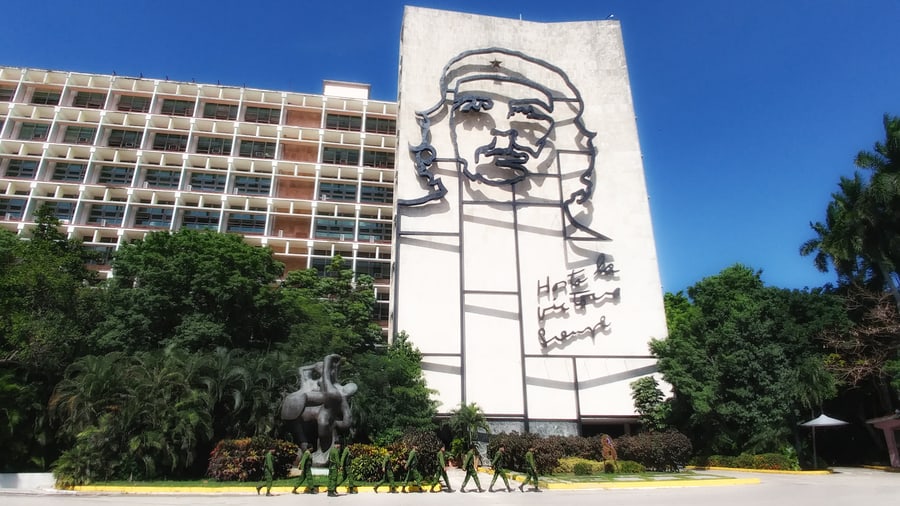
Relief of Che in the Revolution Square
OTHER PLACES OF INTEREST IN VEDADO
Within the neighborhood of Vedado we had two important things to see:
- The National Hotel of Cuba. Here Fidel Castro ruled here in his first two years of governing after the Revolution.
- The House of Music of Miramar. The other house of music in Havana, in Centro Habana, was under construction and we could not see it either. Nevertheless this was a minor since we had planned to go to the house of the music of Trinidad at which they had given us better opinions; specially of the one in Trinidad.
OTHER top THINGS TO DO IN HAVANA
SHOWS
Havana’s “Shows” are well known: live music and dance performances have been taking place in the city for decades. Some are very famous and have very high prices such as the Tropicana, while others are more affordable but perhaps less spectacular.
We decided to go to Guajirito, where the show cost was 30 CUC with 3 drinks. In the shows, you can choose either a combo of dinner and show or just the show. The dinners are not at all recommended, since they are expensive and fame of poor quality. If you wanted a dinner the price was 50 CUC.
The Guajirito show consists of former members of the celebrated Buena Vista Social Club. Although at first all the performances were known songs and dances, little by little they were interacting more with the attendees. In the end, all the audience get up on stage dancing the conga with the performers.
THE CAÑONAZO
This act is done each day at 9 pm, from the Fortress of San Carlos. It symbolizes the cannon fire done in the 18th century daily like a signal to close the doors of the city. This was because at that time Havana was a walled city at war.
In order to go, you need a taxi or bus as you have to go through the underground tunnel that crosses to the fortress where only vehicles can circulate.
WHERE TO STAY IN HAVANA
In Havana there are many types of accommodation and price range. As we already told you in the Guide to organize your trip to Cuba, we only stayed in Casas Particulares. This is the best type of accommodation if you travel to Havana as a backpacker.
Most tourists want to stay in Old Havana. However, the accommodation here is much more expensive and older – prices ranged between 30 and 40 CUC.
In Centro Habana there are more affordable and newer ones. Prices do not exceed 30 CUC. We stayed in two different houses in this area and it was a total success. The rooms had their own bathroom, air conditioning and comfortable beds.
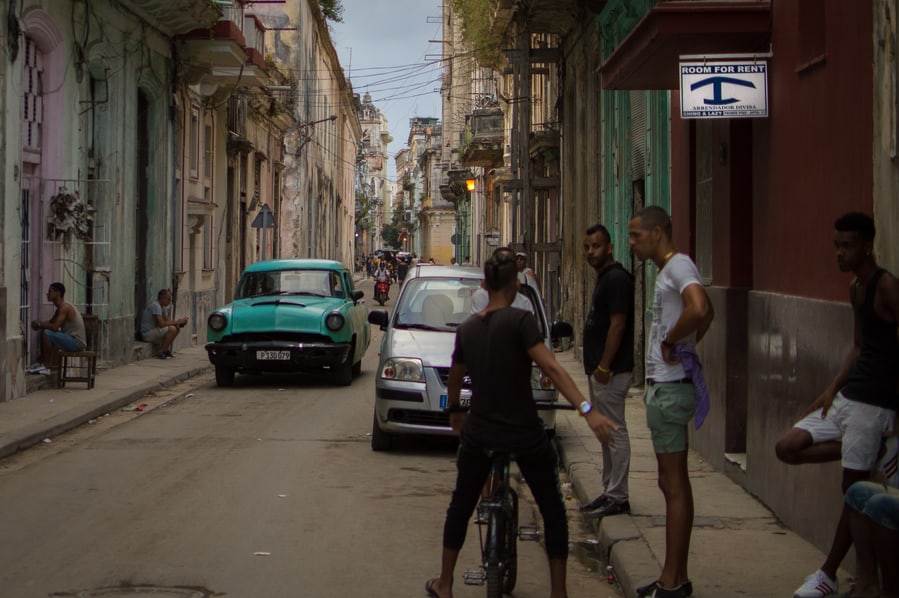
Casa Particular sign
We definitely recommend that you stay in Centro Habana.
WHERE TO EAT IN HAVANA
In Havana, we can find lots of local restaurants with very basic food that are ridiculously priced to paladares where we will pay a large sum of money.
In the local restaurants, the food is very basic and repetitive. The base is rice, beans and chicken or pig in some occasions. The positive point is the low price that you pay. In addition to the restaurants, there are locals by the street that serve coffee, ice creams, bakery, etc. where locals go and at which prices are also very low. In these places, you can pay with the national currency CUP.
A paladar is a private restaurant. The concept is something like a family home where you can eat homemade local food prepared by the family that lives there. Many of them, especially in Havana, have become famous restaurants over the years.
We alternated between paladares, more “tourist” restaurants, and local restaurants.
DOÑA EUTIMIA
Doña Eutimia is located in Callejón del Chorro, next to the cathedral. It was recommended to us, and the truth is that the quality of the food was very good. In this paladar, we enjoyed a real Cuban rice dish and other delicacies for no more than 25 CUC for two people.
EL CHANCHULLERO
Amongst all, our favorite place is El Chanchullero. It’s a building with three floors, looking much more modern, thuggish and transgressive than the rest.
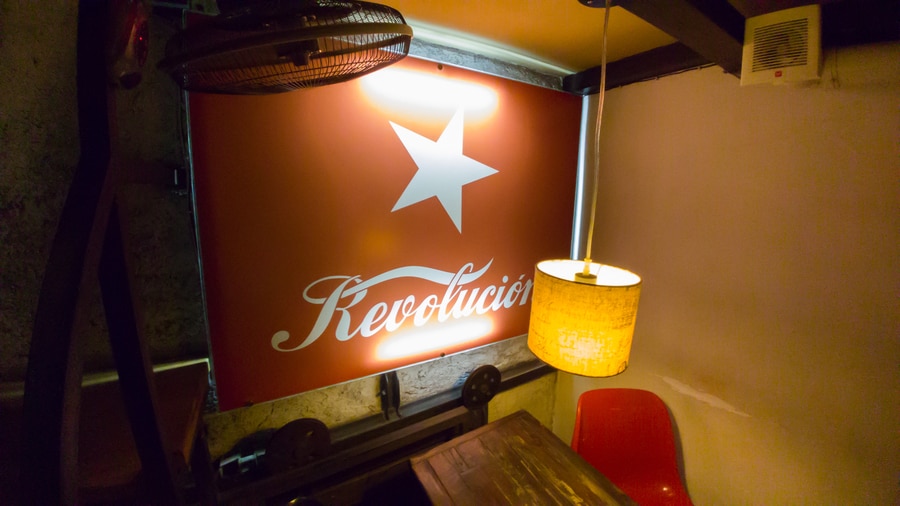
El Chanchullero
The first picture you see upon entrance prays a phrase that invites you to stay. You see “Hemingway has never been here” in clear mockery and contrast to the big, expensive and touristy Bodeguita del Medio and Floridita.
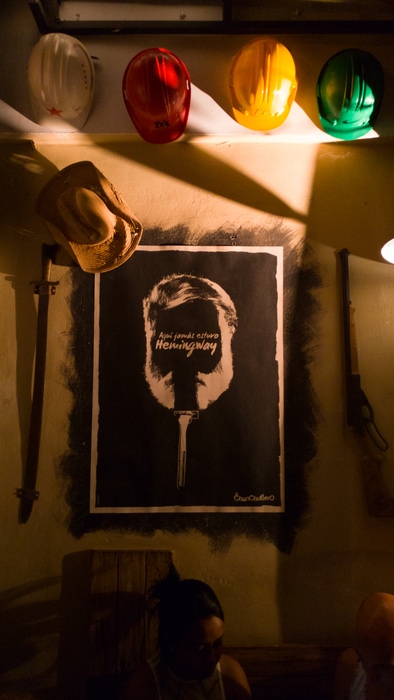
Hemingway has never been here – El Chanchullero
The prices were very cheap but not for lesser quality. The food was scrumptious and the mojito looked better than the one at La Bodeguita in our opinion, and not to mention, at half the price.
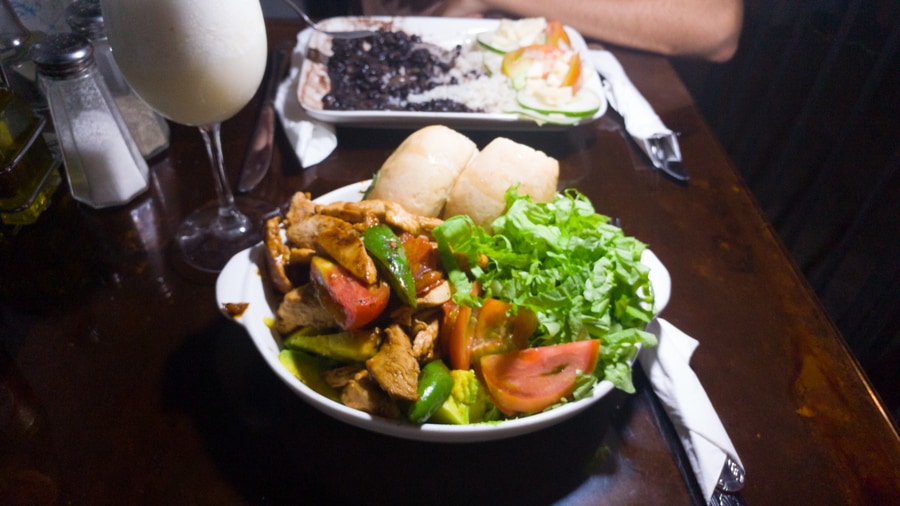
Our menu in El Chanchullero
The scene is younger, and although it is frequented mainly by tourists, you can also see local people. The downside is that sometimes it is difficult to find a table, especially on the terrace at the top floor.
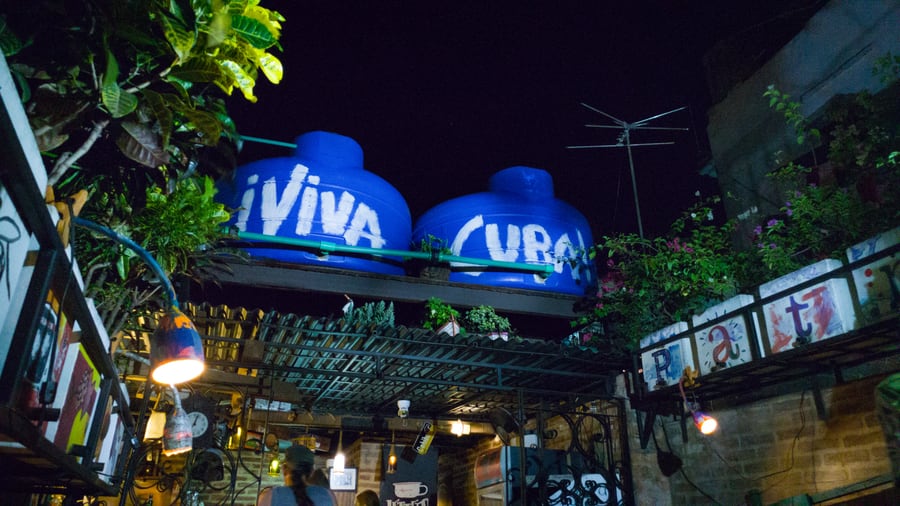
Terrace of the Chanchullero
O’REILLY AND EL DEL FRENTE
We especially liked O’Reilly for cocktails and snacks. It is on the street with the same name. They always serve potatoes with pickles as a very tasty appetizer. If it is full, or you want something a little cheaper with the same quality, go to El del Frente (translates to “the one in the front”). The place is called just that and they are owned by the same people as their neighbour in the front, never better said. The menu is almost identical.
JACQUELINE FUMERO CAFÉ
Although every day we had breakfast in the private house where we stayed, one day we decided to try something different. We opted for the Jacqueline Fumero Café, next to the Revolution Museum. We had a pure Parisian style breakfast there for a very reasonable price.
TRANSPORTATION IN HAVANA
In Havana we can find all the modes that we appointed in the Guide to prepare for your trip to Cuba: official Taxis, shared taxis, bicitaxis, cocotaxis, buses, etc. Tours in Cadillacs are very typical in Havana.
Without a doubt, the mode that we found most original and authentic was by bicycle, especially to explore Vedado, since the neighborhood is quite far from downtown to do on foot.
The common thing is to visit this neighborhood by taxi or in the typical tourist bus that stops at the sites of interest. However, we aimed at trying to do something different and decided to rent bikes to tour this part of the city at our pace. This was not easy in Havana even though it may seem very simple in any other city in the world. There are hardly any bikes, and if any, extremely old ones.
HAVANA BIKE
Close to our private house, we met a guy who rented bicycles for 15 CUC a day. Surprisingly the bikes were new and fully equipped. The guy had a great opportunity to study in Germany and brought back several bicycles from there.
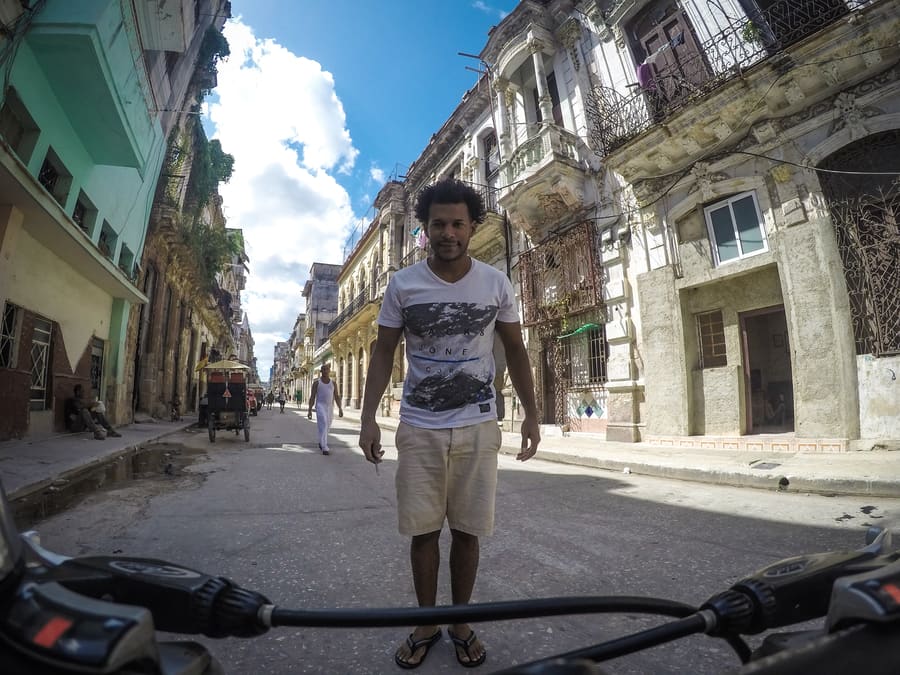
Our friend Yuri getting the bikes ready
If you want to try this fun and different experience to visit Havana in a bicycle, do not hesitate to get in contact with Yuri on his Facebook page. Also, you can write him at yuria.padilla@nauta.cu or yuripadilla017@gmail.com.
The bicycles are in Consulado Street Nº61, aprt 2, between Genios and Refugio Street. Centro Habana.
Here you can find a video of our experience biking Havana.
GENERAL TIPS TO ENJOY HAVANA
Havana is a vibrant and very large city. The amount of time that you want to dedicate to visit depend on many factors and personal taste. We considered 3 days to be the minimum to visit the city and adapt to its pace. From your first hours in Havana to your last day, there is a world of ways you can experience and see the city. This happens in all destinations, but it is magnified in Havana.
We hope the following tips will help you to adapt to Havana as soon as possible.
WHERE TO EXCHANGE MONEY IN HAVANA
You will surely fly to Jose Martí airport in Havana. Once there, you will not be able to use foreign currency to pay, so you will need to have Convertible Cuban pesos (CUC).
We recommend NOT to exchange beyond what is strictly necessary at the airport for paying the taxi to the city, plus a little more. If you do not want to start off on the wrong foot on your trip, do not fall into the same trap as 90% of tourists. The exchange rate is very disadvantageous at the airport. You will save a lot if you exchange most of your money in the downtown CADECA in Obispo Street.
HOW TO AVOID TROUBLE
Cuba is one of the safest countries we have ever been to. The feeling is of complete confidence both day and night.
However, even although the chances of robbery with violence are practically non-existent, care must be taken when it comes to theft due to carelessness and scams where they take advantage of the picaresque image to take a few pesos. Although it can happen anywhere, it is exacerbated in Havana as they become accustomed to the tourist crowds.
The best thing you can do is to know what these types of scams are consist of, so you can avoid them as soon as they start. Here, we tell you some funny anecdotes of encounters with the so-called jineteros.
Although Cuba is considered safe, I advise you to buy round-the-world trip travel insurance. You will also have a 5% off for being our reader.
PHOTOGRAPHy TIPS
Whether with a DSLR camera, a compact camera, or simply the mobile camera, Havana offers endless photographic possibilities, as far as Street Photography is concerned. Photographing its life is at the top of the list of things that you have to do in Havana.
The neoclassical and art nouveau buildings, the Cadillacs of the 50’s, the colors of the streets and people’s clothes, groups of children playing in the street … Everything offers a perfect frame to take photographs not only of great beauty and contrasts but also pictures which tell stories.
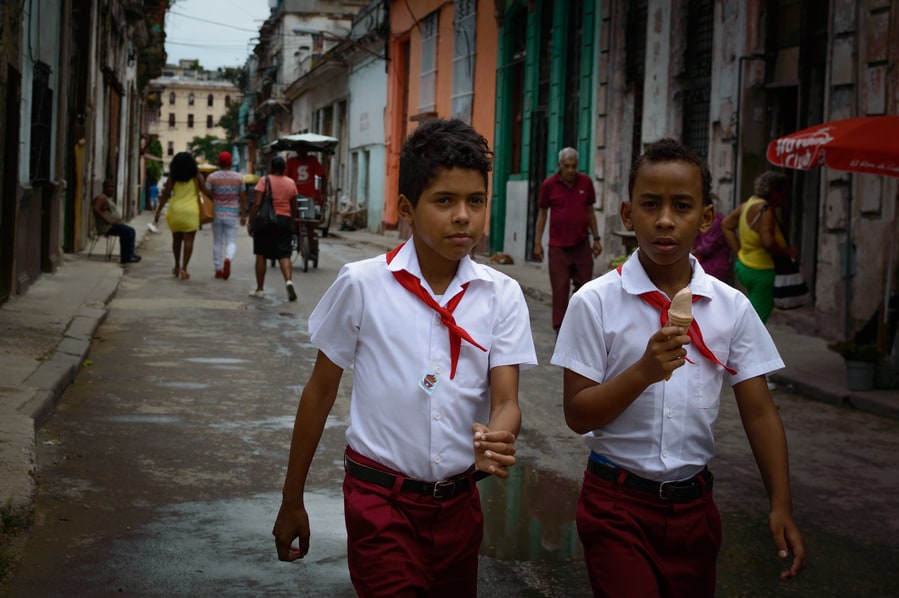
Children leaving school
Havana provides with photos with “soul” and not the simple documentary photographs that are usually seen in the vast majority of travel reports.
The first and most important advice you should bear in mind is that Havana is a city with a lot of action, the speed of it is exponential to its beauty. In the twinkling of an eye, a scene changes completely.
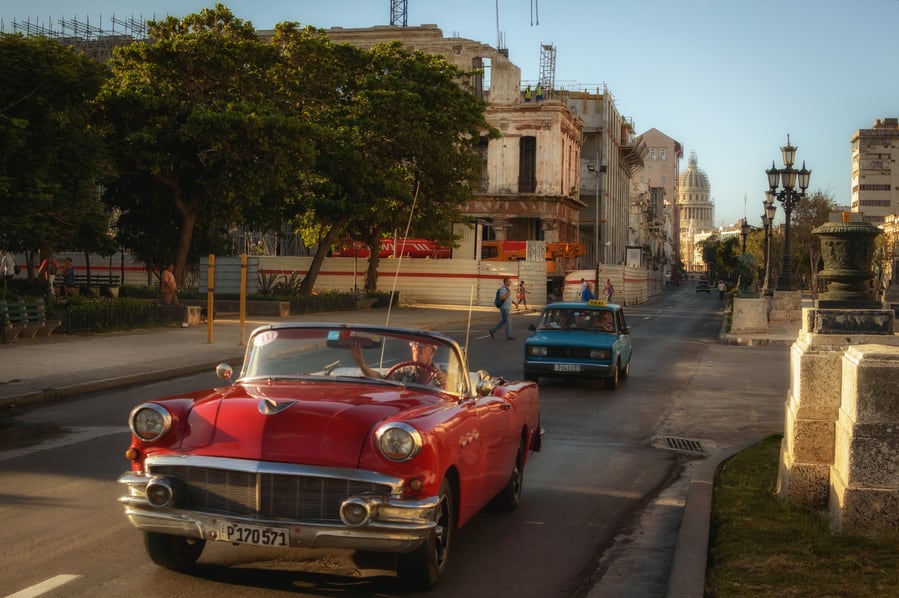
Speed is essential to photographing cars
TIPS FOR ANY DEVICEs:
- Keep your eyes wide open and be watchful. The action happens very fast and if you look closely you will see sights and stories that are worthwhile. Have the camera and the mobile always at hand.
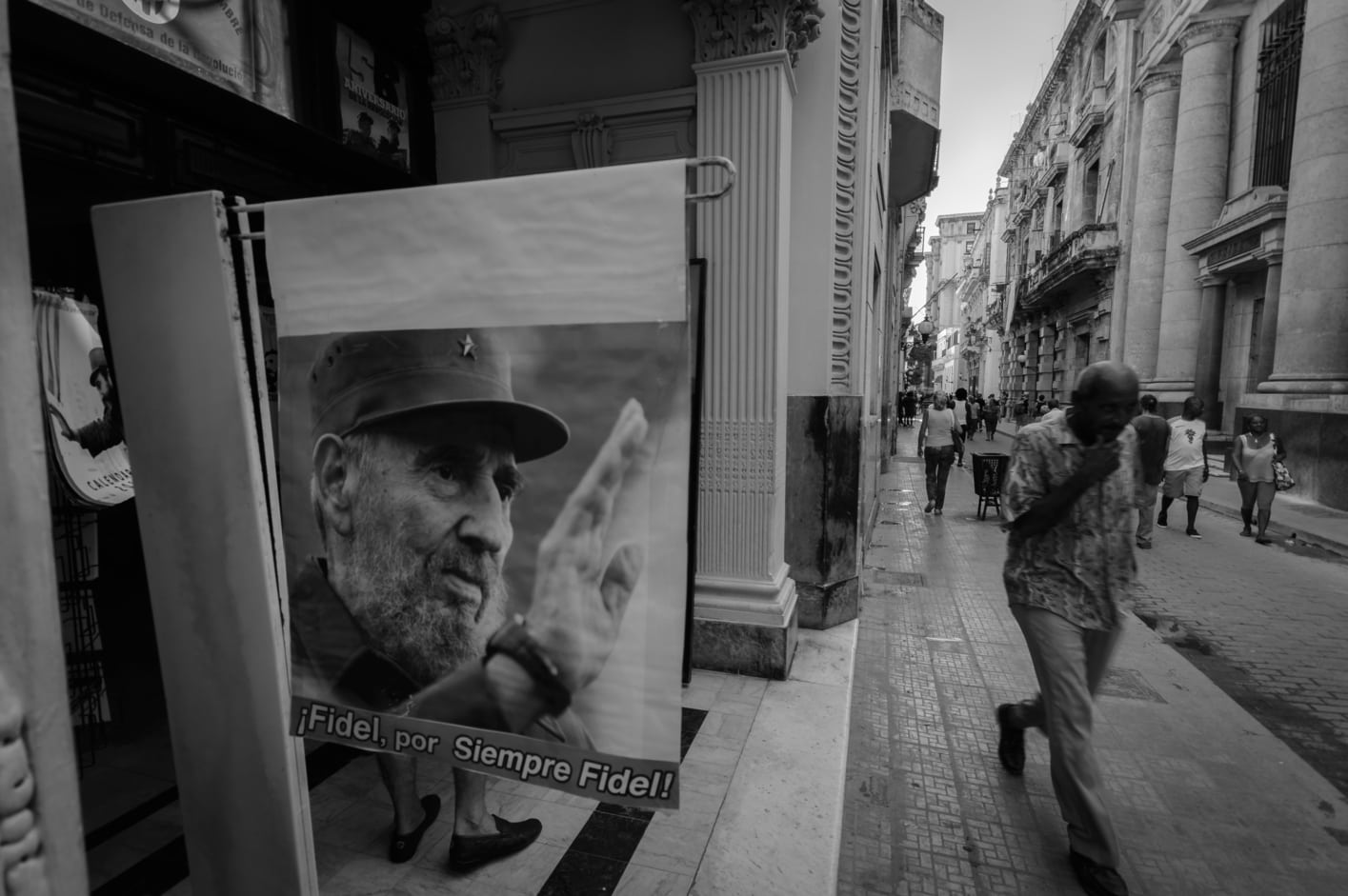
Have the camera and the mobile always at hand
- Do not just stay within the touristy or well known sites. The capacity that Havana has to surprise has no limits and there are photography opportunities in every corner.
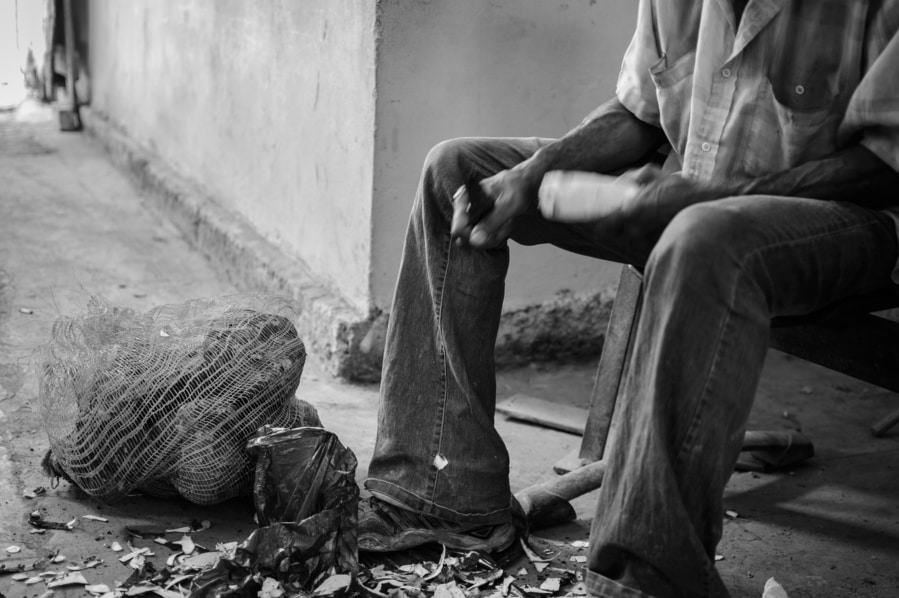
There are photo opportunities on every corner
- Do not be shy to mingle with people. Talk to them and ask for a portrait. Cubans are very friendly and open, they offered without hesitation.
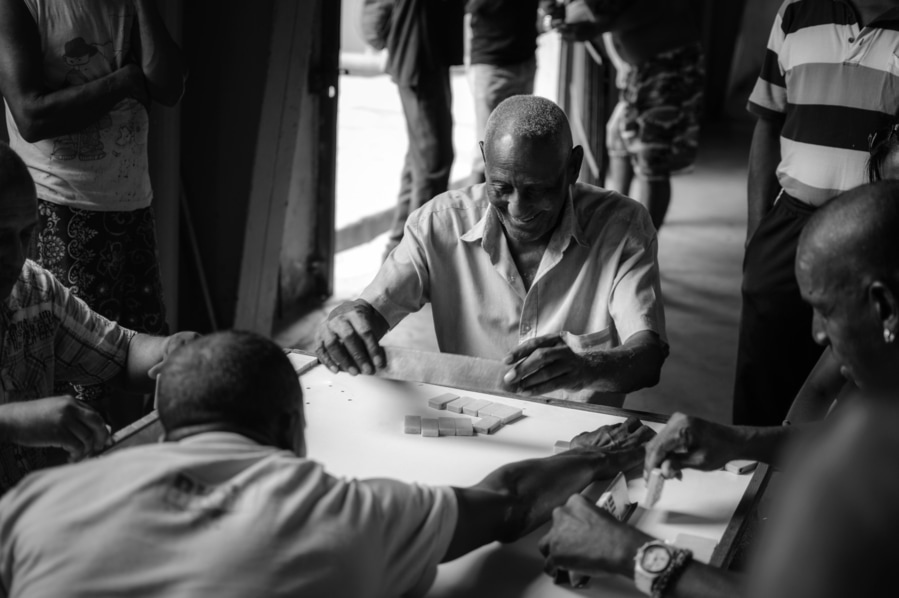
Mingle with people
IF YOU USE A RÉFLEX CAMERA:
- Do not be overwhelmed about always having to shoot in manual mode. As we have commented, the action is very fast so setting the priority mode to open or automatic can become useful.
- Regarding lenses, medium focal lengths ranging from 20 to 70 are the most practical.
- The tripod is not very necessary for such a changing environment. We only used it for one of the sunsets at the Malecón.
- Although the improvisation and visualization factors are especially important, do not forget to plan locations of places that you want to go. Flickr, 500px or Instagram can help.
HAVANA MAP
Havana is a special city, full of unique moments that was worth exploring and feeling. Due to its strong personality, there’s not really in between as far as tastes are concerned. You will end up loving it or hating it, but it is certainly an experience that you should live at least once in a lifetime.
